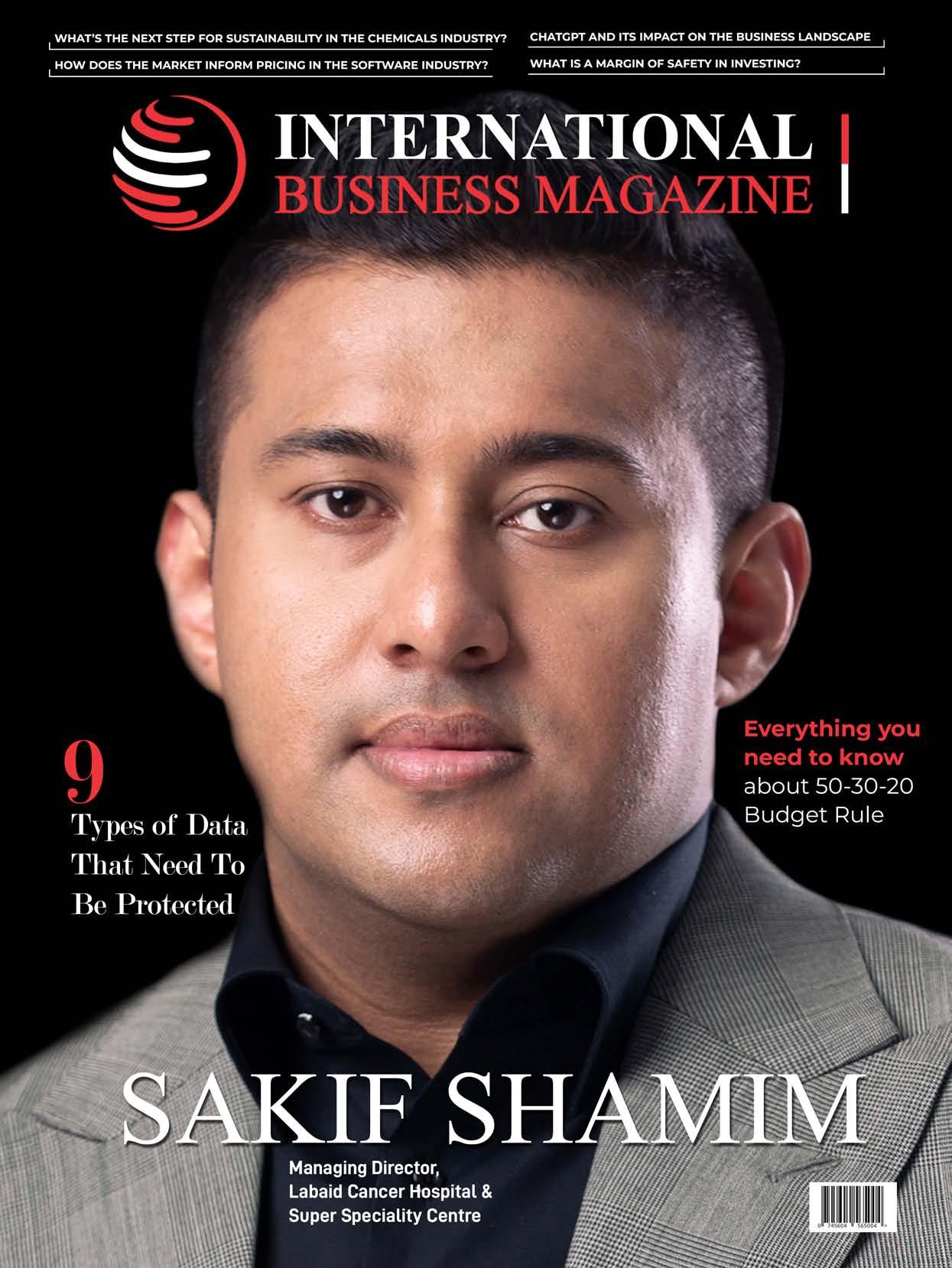
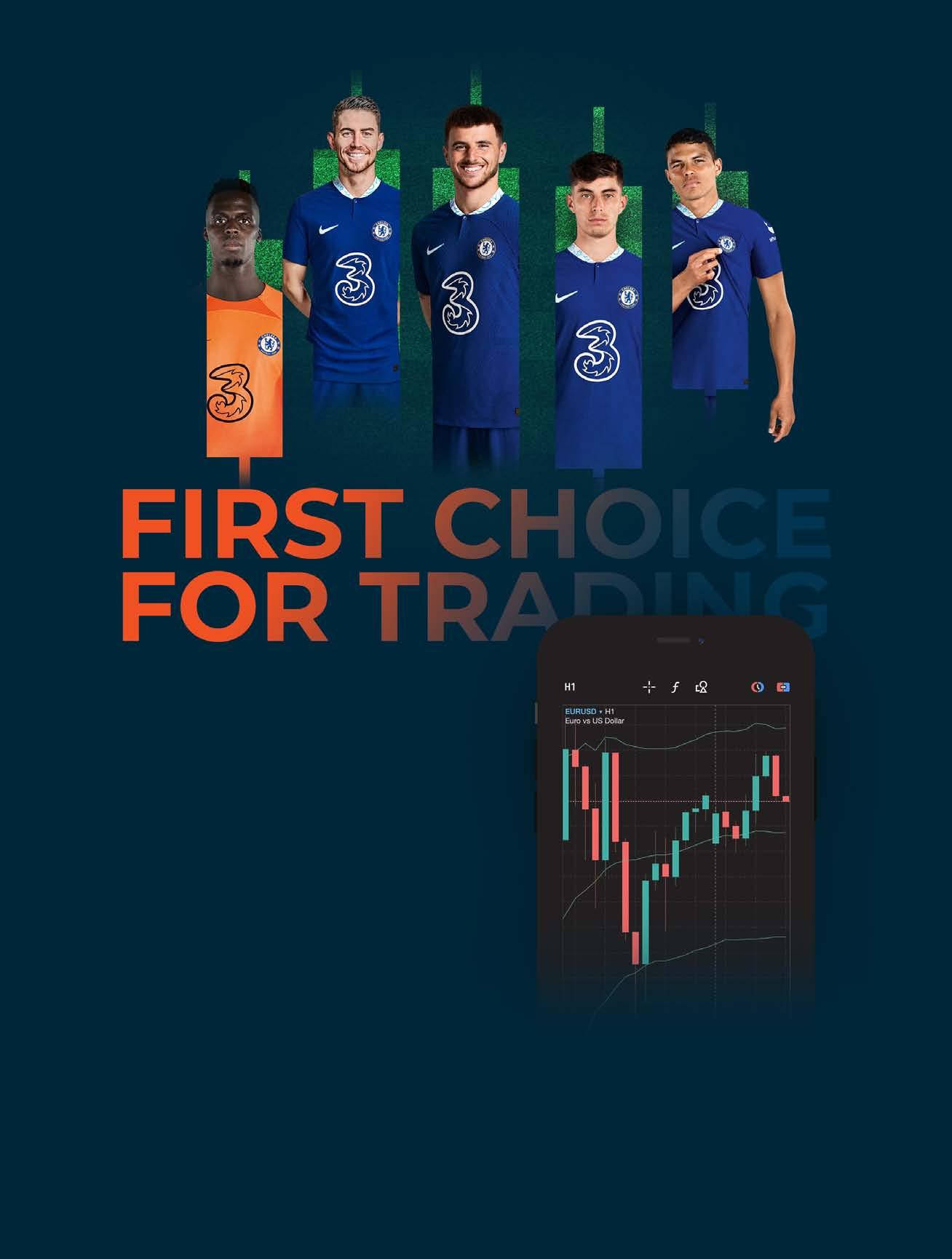


FOREX. INDICES. COMMODITIES. www.gomarkets.com Trading CFDs carries significant risks and is not suitable for everyone. You should ensure you fully understand the risks involved and seek independent advice if necessary. Before you make any decision in relation to a financial product you should obtain and review our Target Market Determination, Product Disclosure Statement, Financial Services Guide and other CFD legal documents. *International Business Magazine Awards 2022
WELCOME
Managing Director
Shashank M
Co-Founder & CEO
Shankar VS Editor
Ujal Nair
Assistant Editor
Medhaj Nair, Sathya Narayana B
Amith Raj, Tasleem Majumder
Head of Operations
Charles Grey
Head of Production
Shank Mendez
Head of Research
Sara Watson
Head of Media Sales
Charles Grey
Media Sales Manager
Chris Young
Advertising contact chris@intlbm.com
Content Managers:
Daniel Edwards, Sumana Shankar
Business Development
Leo Morgan, Alisha Taylor, Jane Sanders, James Smith, Jason Brown, Lily Jones, David Johnson, Stella Grace,
Graphic Designer
R Ravi Kumar
Video Editor
Nelson Caitan
Account Manager


Agnes Wong
Registered Adddress: Sharjah Media City (Shams), Al Messaned City, Al Bataeh, Sharjah, United Arab Emirates,

P.O. Box: 515000
Office Address:
Suite No 502, Al Tawhidi 1 Building, Floor 5, Khalid Bin Al Waleed Road, Bur Dubai, Dubai, United Arab Emirates.
Email: info@intlbm.com
Phone: +971 55 686 6713
NOTE FROM
EDITOR
Advanced AI with enhanced common sense boosts Business
Artificial intelligence has set a trend in most industries across the globe and is seen as the next big disruption. Professionals are turning to these AI tools and certain AI tools are turning many into professionals in their respective fields. This magazine will enlighten you on the latest possibilities available today.
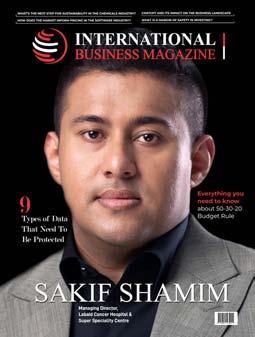
On the cover, we have Sakif Shamim, the Managing Director of Labaid Cancer Hospital and Super Speciality Center in Bangladesh. He is the leader and the face of the leading cancer Hospital in South Asia and the most advanced cancer treatment in Bangladesh. You can read all about the organization that has become the trusted healthcare service provider in Bangladesh.
Another special feature to look out for in this issue is Capital 3PM. The newly established Dubai branch office is aggressively promoting its wealth generation products across the Middle East. You can learn a lot about investments and wealth management from Juli Fairclough Davis.
Our other interesting articles include sustainable biotechnology processes in the chemical industry, an article about the builder’s risk insurance, data protection techniques, forex trading methods, successful business practices from home, and a few of the latest market report analyses from KPMG.

Flip through the pages for some useful insights and the latest updates from across the globe.
Madhusmitha V Patil Chief Editor
Be sure to check out our website at www.intlbm.com
Connect with us on Twitter: @ibmag_magazine and Facebook:@intlbm Instagram: @intlbm.
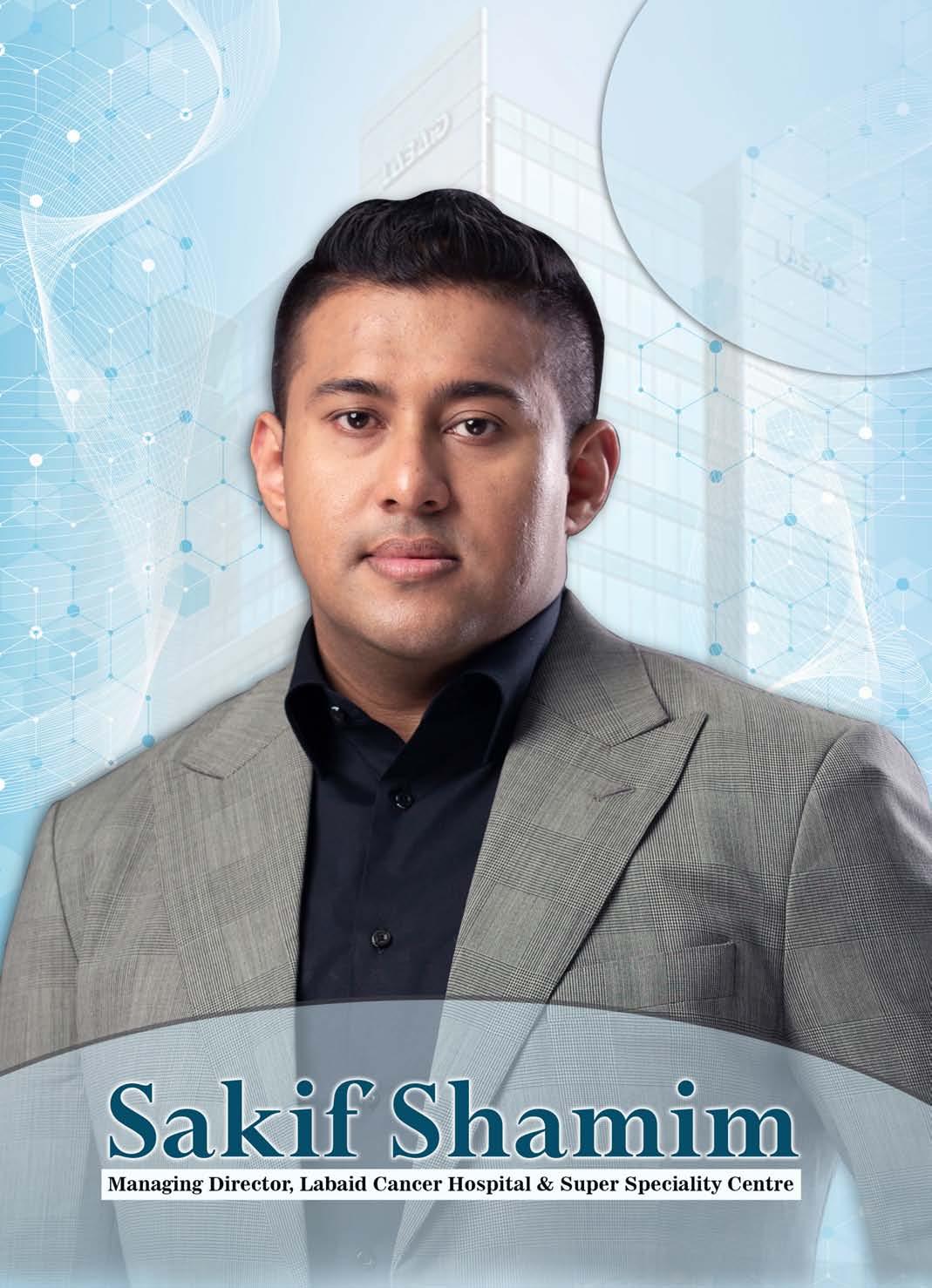
Cover Story 12



Content Articles How to Run a Successful Business from the Comfort of Your Home Global credit card issuance to exceed 320 million by 2027 Buying Foreign Land and Property: Is It A Good Investment? 16 54 66 Saldo bets on loan automation tech to promote safe and fast lending in Europe 28 Latest car Rental Industry Trends in 2023 36
Types Of Data That Need To Be Protected 9
Keeping data secure is an increasingly important task for businesses in this day and age. Protecting personal data, financial information, and other sensitive information from unauthorized access is essential to the success of any company. But what types of data should be protected? From understanding ‘what is a CSR’ to the more common approaches, here are some of the most important types of data that need to be protected.
1. Personal Information
Personal information is any data related to an individual, such as name, address, phone number, Social Security Number, birth date, and more. This type of data should be kept secure to protect individuals’ privacy. If personal information is leaked, it can lead to identity theft and other serious security issues like financial fraud.
2. Financial Information
For obvious reasons, data related to financial accounts and transactions need to be kept secure. Credit card numbers, bank account information, and other financial records should be encrypted and held securely. Use two-factor authentication and other security measures to protect financial information whenever possible.


3. Account Passwords
Account passwords access online accounts and services from social media to banking. Protecting account passwords from hackers who can access sensitive information if they get ahold of them is vital. Use strong passwords and change them regularly to help protect account credentials. Passwords should be at least eight characters long and include
Digital 06
upper and lowercase letters, numbers, and symbols.
4. Health Records
Health records contain sensitive information about an individual’s medical history, such as diagnoses, treatments, and medications. These records should be kept secure to protect the privacy of patients. If medical information is leaked fraudulently, it can be used to commit insurance and medical fraud. These frauds are the most common type of healthcare fraud in the US. Healthcare organizations must adhere to HIPAA regulations that require patient data to be protected through encryption or other security measures.
5. Website Databases
Website databases store information about their users, such as usernames and passwords. If hackers can access these databases, they can gain access to user accounts, possibly leading to identity theft or financial fraud. Use advanced encryption protocols to protect website databases and the information they contain. Other security measures, such as firewalls and DDoS protection, can also be used.
6. Intellectual Property
Intellectual property is any data related to a company’s ideas, processes, or inventions. This data type should be kept secure to protect a company’s competitive advantage. Intellectual property can include patents, trade secrets, and copyrighted material, such as software or artwork. Companies should use encryption to protect their intellectual property from unauthorized access.
company’s employees, such as Social Security Numbers, salary information, and contact information. This data should be kept secure from hackers and other unauthorized individuals to protect employees’ privacy. Companies should use encryption, firewalls, and other security measures to protect employee data from unauthorized access.
8. Business Plans
Business plans contain sensitive information about a company’s strategies and operations, such as financial projections, research and development plans, and customer information. If this data is shared with competitors or unauthorized individuals, it can put companies at a competitive disadvantage. Companies should secure business plans with strong encryption, firewalls, and other security measures.
9. Customer Lists
Customer lists contain information about a company’s customers, such as contact information and purchase history. By understanding what is a CSR master file, companies can protect this data from unauthorized access and use. Companies should use encryption and other security measures to protect customer lists from hackers or malicious actors.
Final Thoughts
7. Employee Information
Employee information is any data related to a
Businesses must keep data secure to protect their customers, employees, and other stakeholders. Data should be covered with encryption, firewalls, two-factor authentication, and other security measures. Companies should also regularly review their security protocols to ensure they are up-to-date and effective. By taking the appropriate actions, businesses can protect their data and prevent it from being accessed by unauthorized individuals.
Digital 07


Digital 08
No code development has become increasingly popular in recent years as a way for developers of all skill levels to create web and mobile applications quickly and easily. No code development is the perfect place to start if you’re a new developer looking to build your own app without having to learn a programming language. Here’s a guide from Mark Stiffler on how to get started with no code development.

What Is No Code Development?
No code development is an approach that allows developers of any experience level to use visual tools such as drag-and-drop components, templates, and other resources to develop applications with little or no coding required. It simplifies the development process by providing all the necessary components in an easy-to-use format that you can customize according to your needs. This makes it easier for developers who don’t have extensive coding knowledge or experience to create their apps.
What Are The Benefits Of Using It Over Traditional Coding Methods?
No code development is an excellent way for developers of any level to quickly create applications without needing to learn complex coding languages. Not only does no code development save time, but it also allows developers to get apps up and to run faster than ever before.
Mark Stiffler says No Code development can be used to build complex applications with minimal effort. Traditional coding methods can take weeks or even months to build a complex application. By using No Code development tools, developers can get their applications up and running in a fraction of the time.
How To Get Started With No Code Development
When getting started with no code development, you can use various tools and platforms. The most popular No Code development tools include Bubble, Appsheett, Glide, and Thunkable. These tools provide you with drag-and-drop components and templates to help speed up the development process. Additionally, many tutorials and resources are available online to help you get started without code development. Once you feel comfortable using the tools, you can start building your own apps without requiring coding.
How To Create A Basic Website Or App Without Any Coding Required
Once you’ve chosen a No Code development tool or platform, it’s time to start building your app. Depending on the tool or platform you choose, there will be different methods for creating your app. However, most No Code development tools follow the same basic process. You’ll start by designing your app
Digital 09
using pre-made components and templates, and then you’ll be able to customize it with your content. Finally, once you’re happy with the design of your app, you’ll be able to deploy it and share it with others.
Tips For Beginners On How To Start Learning No Code Development
No code development is an excellent way for developers of any skill level to quickly create applications without needing to learn complex coding languages, says Mark Stiffler. However, it can still be intimidating for new developers who don’t have much experience with coding. To make the process easier, it is essential to familiarize yourself with the different No Code development tools and platforms available.
It’s important to read the documentation and tutorials provided to understand how they work entirely how they work. Finally, it’s crucial to practice and experiment with the different tools until you feel comfortable using them. Practicing allows you to make mistakes and learn from them without worrying about consequences.
Successful Businesses That Have Been Created Using No Code
No Code development has been utilized by several successful businesses to power their online presence. Here are a couple of companies that use No Code development tools: Airbnb
Quora
Quora is another example of a successful business that uses no-code development technology. Quora leverages no-code tools such as Glide and Appsheet to build web and mobile applications for their users.

Doordash
Doordash is another example of a successful business that uses no-code development tools to power its web and mobile applications. Using no-code development tools, Doordash could quickly create their applications and launch them without needing any coding knowledge.
Conclusion
Airbnb uses no-code development to create its website and mobile app. Using a no-code development platform, Airbnb could quickly develop its applications with minimal effort.
No code development is an incredible tool for developers of any skill level to quickly create complex applications without needing to learn traditional coding languages. With the variety of tools and platforms available, getting started with no code development is easy. To ensure success when getting started, read the documentation and tutorials provided by each platform and practice using them until you feel comfortable. Many successful businesses have used No Code Development Tools such as Airbnb, Quora, and Doordash, which shows how powerful this technology can be in creating unique websites or mobile apps with minimal effort.No code development has become increasingly popular in recent years as a way for developers of all skill levels to create web and mobile applications quickly and easily. No code development is the perfect place to start if you’re a new developer looking to build your own app without having to learn a programming language. Here’s a guide from Mark Stiffler on how to get started with no code development.
10 Digital























 Sakif Shamim
MD, Labaid Cancer Hospital and Super Speciality Center
Sakif Shamim
MD, Labaid Cancer Hospital and Super Speciality Center

In 1860, Ralph Waldo Emerson, an American Philosopher famously quoted, ‘The first wealth is health’. The proverb, ‘Health is Wealth’ is the core fundamental motto of many countries and organizations as the basis of any economy is a good community and to develop a good community, we need to raise a healthy population.

Countries across the world are plagued with several diseases that stem from their geographical locations and the cultural lifestyle of the people in those regions. However, most Asian countries today are fighting with one common enemy: Cancer. A country to consider in particular is the rampantly booming South Asian economy of Bangladesh, which is being tagged as the next ‘Asian Tiger’. It is currently touted as the second-largest economy in South Asia and is reported as the 35th largest in nominal terms across the globe. In spite of the global pandemic, Bangladesh managed to register
a GDP growth rate of 7.2 percent for the fiscal year 2021-22. With healthcare spending of Bangladesh reported at around 2.48 percent of the total GDP in 2019, Bangladesh has recently announced nearly Tk 369 billion (USD 3.4 billion) for the health sector in FY 2022-23.
Labaid Cancer Hospital and Super Speciality Center in Dhaka is the first-ever comprehensive cancer care facility in Bangladesh. It shines as a mark of excellence in Bangladesh’s healthcare sector with over 30 years of legacy. International Business Magazine recently acknowledged it as ‘Leading Cancer Hospital, South Asia 2023’, ‘Most Advanced Treatment for Cancer, Bangladesh 2023’ and ‘Most Trusted Healthcare Services Provider, Bangladesh 2023’. This multi-awardwinning hospital has brought world-class cancer treatment into the ambit of the common people of Bangladesh.
We strive to ensure access to best cancer treatment for everyone in Bangladesh
12 Cover Story
- Sakif Shamim
Ensuring Special Treatment for All
According to research, Cancer and respiratory diseases are the two most dangerous diseases in Bangladesh. It factors for 25 percent of deaths in the country. With lung cancer and oral cancers being the two most common cancers among Bangladeshis, reports are indicating an upward trajectory in the near future. Dr A M Shamim, the Chairman and the founder of Labaid Cancer Hospital and Super Speciality Center, set out
on an arduous journey to save his country and develop a healthy prosperous economy. This Super Speciality Center stands at the forefront of Bangladesh’s fight against Cancer. The Center houses modern equipments for diagnosis and radiotherapy treatments. Labaid Cancer Hospital and Super Speciality Center has set a benchmark with the inclusion of latest technologies and services like
Brachytherapy from SagiNova
CT Simulation from Siemens
LINAC from TrueBeam
Ultrasound from Philips
Flaxavision
Modus Qa

Digital Mammography
Robotic Surgery
3T MRI
Chemotherapy
Immunotherapy
Genome Therapy
Trubeam from Varian
Saginova from Eckert & Ziegler
and many more...
13 Cover
Story
Sakif Shamim, Managing Director for Labaid Cancer Hospital and Super Speciality Center explains the mission of his facility, which is providing a wide range of services and facilities in the most costeffective manner. Sakif is credited for improving corporate governance and culture across the Labaid Group. He has played a key role in improving the management and the Group’s brand image across the Healthcare sector in Bangladesh and South Asia. He and his dedicated staff of doctors and other medical professionals are committed to forwarding the trend set by the founder of the institute, Dr A M Shamim for the healthcare sector of Bangladesh. Sakif Shamim ensures the most advanced treatment for Cancer in Bangladesh through his experienced Oncology team of medical, radiation, surgical and gynecological Oncologists. The super speciality center is setting world standards in the sub-continent through its experienced medical physicist, radiologist, pediatric oncologist, haemato-oncologist, fully equipped pathology Lab, ICU, HDU, 8 Modular advance operation theatres, Daycare Center, Dialysis Center, Palliative care and psychotherapy center, 24/7 emergency pharmacy service and all super-specialty inpatient departments. The 14-storied modern building in Dhaka comes with
180+ inpatient beds under the care of expert medical professionals, skilled nurses and a wellorganized multidisciplinary treatment board.
Sakif Shamim further reveals, “Labaid Cancer Hospital and Super Speciality Center meets international standards of treatment through six advanced modular operation theatres, three advanced LINAC machines, a solid organ transplantation programme, BMT, cyberknife technique and access to clinical research drugs. It is our ambition and constant perseverance to deliver the best treatment in oncology at the most affordable rates possible. My team at Labaid have delivered their highest level of commitment and dedication in ensuring the best facilities and treatments for the patients and their families.”
Labaid Cancer hospital and super speciality center has even set up several centres of excellence for brain cancer, blood cancer, eye cancer, thyroid cancer, lung cancer, skin cancer, kidney cancer, prostate cancer, bone cancer, breast cancer, urinary bladder cancer, pancreatic cancer, stomach cancer, liver cancer, oral cancer, ovarian & cervical cancer, penile cancer, Esophageal cancer, head and neck cancer, colon cancer and nasopharynx cancer.
This multi-award-winning healthcare center is also considered as one of the most trusted healthcare services providers in Bangladesh due to its vast array of diagnostic packages for various kinds of health ailments and age groups. Sakif Shamim has even taken the initiative to take care of long-time hospitalized patients and their families. This has proven to be beneficial for patients arriving from faraway regions or even foreigners. The initiative, which is called ‘Oporojoyi Abashon’ is one of the many humanitarian gestures from Labaid Cancer hospital and super speciality center. Through this initiative, the patients and their family members
are ensured with an accommodation that is comfortable, safe and affordable for a long period of time while being close to the hospital.
In order to achieve total digital transformation by 2026, Labaid Cancer Hospital and Super Speciality Center have partnered with Darwinbox. This would enhance the HR operations and workforce management for its 2000+ employees across Bangladesh. Sakif believes that his initiatives, especially with the new HRMS policies have improved productivity, efficiency, and market leadership of the Labaid Group. Such modern

14 Cover Story
Mark of a Passionate Healthcare Business Group
corporate developments have also made Labaid Group an ideal place to work in for healthcare professionals.


Sakif Shamim, the passionate healthcare entrepreneur shared his vision for a promising and prosperous Bangladesh, “We are working towards the goal of establishing 10 tertiary hospitals and over 30 cancer centers across Bangladesh. We look to build upon the trust and reliability that Labaid Group has come to be associated with through my father Dr A M Shamim. With over 30 years of legacy in healthcare and modern revolutionary strategies, Labaid Group is a milestone in the overall cancer treatment industry of Bangladesh. We strongly believe that everyone deserves access to cancer care and we are committed to delivering better treatment and quality of life for all cancer
patients. We have been conducting several awareness programmes across the country to spread the word of the opportunities available in cancer treatment.”
With its core in health care services, Labaid group is growing in other sectors as well including pharmaceuticals, financial, education, agriculture and few others. Sakif Shamim and his loyal supporters at Labaid Group are dedicated to serving the underprivileged and upbringing the overall quality of life in the country. Through several community works and other noble contributions, Sakif aspires to boost the wellbeing of his fellow citizens of Bangladesh and hence promotes charity and various other health beneficiary programmes across Bangladesh.

15 Cover Story
How to Run a Successful Business from the Comfort of Your Home

16 Entrepreneur
In business management, those who run their companies from the comfort of their humble abode have every opportunity to succeed. It feels like an unattainable dream for new business owners, but you’d be surprised how many people manage to run their businesses from home.
One of the most crucial aspects involves using cloud-based services, as it allows you to access company data from anywhere. Those who build a foundation of remote business management have plenty of opportunities to succeed in a competitive industry, but they’ll have to follow a few crucial tips.
1. Ensure you have a list of services handy concerning your home security is crucial, as well as services that you might need in the event of an emergency. It’s also a good idea to go for insurance policies focusing on your belongings, as they’re often a crucial part of running your home business.
such as locked cars and similar problems. Check out companies offering top-quality locksmith San Diego services if you reside or work in the area.
• Develop a detailed business plan outlining future projects
It’s crucial to always be looking ahead when starting a business, and to always ask yourself where you see your company a year or two from now. Outlining your projects, including how you intend to generate revenue and make a profit, is crucial, as well as potential contingency plans in the event that things don’t pan out.
Even if you don’t want to look that far ahead, it’s never a bad idea to have a few contingency plans. Running a business from home is hard work, so it’s a good idea to work out potential scenarios and devise strategies based on hypothetical issues.
especially concerning messenger and online conferencing apps. The same thing goes for project management software, as it helps keep everyone on the same page.
• Focus on employee incentives
While a new business might have a challenging time managing meaningful incentives, it doesn’t mean you can neglect your staff’s hard work. Giving them an incentive for going the extra mile is instrumental, as it helps foster loyalty to your business.
Conclusion
Regarding the services you might need, a lot of people don’t realize the importance of a locksmith. Not only can they beef up home security and master keys, but they can also deal with issues
• Data management platforms are a must

Those looking to run their businesses from home would do well to take advantage of data management platforms as soon as possible. Anything you can use to help automate your business and make things easier is welcome,
Aside from the above tips, it’s also a good idea to focus on the marketing side of things, and to ensure that your social media account is as active as possible. With the best-practice methods above, you can give your homebased business every opportunity to succeed in today’s competitive industry. While you still have to work hard to succeed, having a proper plan can ensure your company flourishes, even as you run it from the comfort of your home.
17 Entrepreneur
Streamline Your Service Business To Impress Your Clients
Running a service business means juggling multiple tasks and responsibilities. Your company will strain, stretch your legs, and suffer your operations if you can’t keep up with the workload. Your business getting overstretched can lead to dissatisfied customers and lost sales.
According to a survey, smalland mid-size enterprises (SMEs) spend an average of 16 hours weekly on administrative tasks. This time is nearly half the standard workweek, meaning you spend most of your time on duties that don’t generate revenue. If this continues, your business will eventually burn out and collapse as you lose out on more productive and profitable activities.
Streamlining your service business is the best solution to ensure your business runs optimally. Here are five helpful tips to get you started:
• Automate repetitive tasks
You want to focus on growing and developing your service company as a business owner. However, completing tasks manually, such as scheduling, dispatching, invoicing, and managing customers, can drain your time and resources. This is especially true for a plumbing service company as their job requires careful coordination between the people in the field and clients. This is where automation can help.

Automation is critical to streamlining your daily operations, allowing you to focus on what matters most for your business. You can invest in plumbers business software or other solutions to simplify your processes. This software helps you automate repetitive tasks, such as the following:
• Scheduling appointments and jobs
• Generating customer invoices
18 Entrepreneur
• Creating and processing payments
• Managing customer records
• Tracking equipment and inventory level
This technology has features to assist you in managing your business in one central location. There’s nothing more rewarding than seeing your service company run smoothly and providing excellent customer service.
• Outsource when necessary
Experts valued the global outsourcing market at around USD$92.5 billion in 2019. That’s a lot of outsourcing activity, and the numbers will continue to grow. This data proves that outsourcing can be an effective strategy for managing your resources better.

Hiring a third-party company specializing in your services can help streamline your operations. You don’t have to worry about adding and training new employees or managing projects from scratch. Outsourcing can be an excellent solution to save time and money while achieving the same outcomes.
• IT services
• Web design and development
• Marketing management
• Sales and lead generation
Outsourcing can help you take some of the most time-consuming jobs off your plate, allow you to delegate tasks effectively, and maximize your business potential.
• Break down tasks into
manageable components
You might not believe it, but getting things done quickly can be counterproductive sometimes. You might overlook some necessary steps or skimp on other crucial details, leading to delivering subpar service and affecting your reputation. Instead of rushing, break down tasks into more manageable components.
For example, create a checklist of all your tasks, prioritize them according to importance, and set deadlines. Whether visiting a site, completing a project, or sending out invoices, having a structured plan helps you stay on top of everything. This approach makes your workflow smoother, resulting in a better customer experience and repeat business.
Here are some tasks you can outsource:
• Accounting and bookkeeping
• Customer service support
• Review, adjust, and refine your business processes
Your business procedures aren’t
19 Entrepreneur
static. They evolve and change over time to meet customer demands and rising market expectations. Take time to review, adjust, and refine your business processes regularly. That way, you can standardize operations and boost customer satisfaction. Here are the following steps to take:
• Monitor customer feedback and note down their suggestions.
• Compare your current processes with competitors and industry standards.
• Identify areas of improvement, such as reducing response times or increasing accuracy in billing.
• Evaluate the potential solutions available to make changes accordingly.
• Set up new systems and workflows and test them thoroughly before rolling them out. Analyzing the above factors helps you determine the weak points and address them quickly. This approach simplifies your operations and propels your business to a higher level.
• Encourage and motivate employees
Sometimes, the problem isn’t always about the efficiency of internal systems. It could be the lack of motivation and empowerment of employees. You may have a streamlined business, but it won’t make

A study found that only 31.5% of employees feel engaged at work, hurting your business’s overall performance. When your team feels unmotivated, they lose focus and become less efficient. You can break this cycle by creating a positive work environment and fostering a sense of purpose among them. Here’s a quick guide to help you out:
• Set clear expectations and goals to help staff stay on track.
• Empower your team by allowing them to take ownership of their tasks.
• Offer training opportunities to support professional growth and develop their skills.
• Encourage collaboration and creative problem-solving among team members.
• Provide constructive feedback and a culture of transparency.
• Help them understand the value of their contributions to the company.
• Hear out their ideas and suggestions for improvement.
Having a team with positive perception, enthusiasm, and commitment to their job will help you deliver better services and create a lasting impression on your
a difference if the people behind it aren’t engaged.
20 Entrepreneur
customers. Developing a successful service business involves more than just optimizing systems. It needs an engaged and motivated team working together to make it happen.
Advantages Of Streamlining Your Service Business
Take a look at the advantages you can expect from implementing s streamlined system:
• Increased customer satisfaction and loyalty
• Improved efficiency and productivity
• Reduced time needed to complete tasks
• Eliminate delays and errors
• Better quality control and assurance
• Enhanced scalability and sustainability

• Boost business reputation
• Strengthened employee morale and engagement
These benefits show that a smooth workflow helps you stand out as customers recognize the superiority of your services.
Conclusion
Streamlining your service business requires deep analysis, innovative methods, and consistent efforts. Use the points discussed in this article to guide you on the right track. If done correctly, you can witness positive results in no time.

21 Entrepreneur

“Our products offer fixed returns of between 8 and 12% per annum, even during a recession”
22 Finance
- Juli Fairclough-Davis of Capital 3PM

23 Finance
Juli Fairclough-Davis, Strategic Development Partner at Capital 3PM receives the award for
‘Best Ethical
Fixed
Income Investment
UAE
2022’ for Capital 3PM
from
H.E.
Hon. Abdulaziz Ahmad, Founder & CEO of Safeer corporate services and Crown Senator of Royal House of Sheba Special Interest Senate at International Business Magazine Awards 2022 in Dubai.
Any investor looking for an investment that offers higher returns, less volatility, broader diversification, and a hedge against inflation would automatically get influenced towards mutual funds, equities, and Gold. However, these investment portfolios are 100% market correlated and heavily driven by market sentiment. The prospects of an alternative fixed-income investment seem even more enticing in these times of economic downturn.
Based in Dubai and London, Capital 3PM provide an alternative short term investment opportunity through a suite of non-market correlated UK fixed-income products. The investments are designed for high net-worth and sophisticated clients who are looking to diversify their portfolio and secure absolute of returns of between 8 & 12%. Capital 3PM are now in their 10th year with a 100% track record of delivering their clients expected returns. They have an ‘excellent’ rating on Trustpilot and more recently received ‘Best Ethical Fixed Income Investment UAE 2022’ award at International Business Magazine Awards 2022 in Dubai.
In an exclusive interview, we talked to Juli Fairclough-Davis, Strategic Development Partner at Capital 3PM. With over 20 years of Financial Services and wealth management experience, Juli started her career in London with Lloyds Banking Group. After 9 years, she set up her own business consultancy working with Merrill Lynch, Bank Of America and Nomura. She was instrumental in the Julius Baer and Merrill Lynch Wealth Management merger based in Zurich, then moving to Abu Dhabi to take up a senior management role with the Abu Dhabi Investment Authority. Juli joined Capital 3PM in 2020 to expand their international client base and fixed-income product offering.
Tell us about your experience at International Business Magazine Awards 2022.
It was an event that was very well organised, Atlantis, The Palm was a fantastic venue for everyone. It was put together extremely well and the award ceremony itself was fantastic. It was a very well-run event and we felt very privileged to be there.
What are the current market conditions that are making your investment products so attractive?

Capital 3PM specialise in one asset class which is fixed-income. When the markets are doing extremely well, you could be enjoying returns of 25 to 30% or sometimes even more, in these times a 10-12% return might not excite you. However, our USP is the fact we provide the same 10-12% returns during the bad times as well. As we perform well during the good and the bad times, people are coming out of the more volatile asset classes to enjoy the 12 % per annum returns. We are completely uncorrelated to the market and people find us as a safe haven right now. In these times of economic unrest, when the rate of inflation is the highest it has been for the last 50 years, money in the bank is actually a bad call. Money in the bank is actually a risk as the values keep decreasing year on year due to inflation.
Our fixed-income investments are asset-backed, insured and provide a safe haven even for a short period of time. Our lock-in period of 1 to 2 years is extremely attractive for many investors in the international space who want to diversify their portfolio. This is proving to be the best proposition considering the current state of the stock markets.
24 Finance
Tell us about some of the unique solutions provided by Capital 3PM.
Capital 3PM was founded by Adam Davis over 10 years ago. He spent his entire life in the UK property market and Capital raising space, my background lies in wealth management, so, between us, we have got a lot of experience across many financial sectors. Essentially, what Capital 3PM does is work with financial advisors, family offices, and institutions and raise capital in the international space. We currently have networks in around 45 countries around the world. We work with 3 UK providers that are looking to raise capital in the international space. Capital 3PM raise capital on their behalf. They are doing what they do in the UK and we bring them international money through our capital-raising arm. Our financial advisors and financial advisor networks have access to investors that are looking for fixed income. They are looking for solid investment proposals to invest money for 1 or 2 years.
What are the key factors that differentiate between the private investors and the institutional clients at Capital 3PM? How do you manage to cope with their varying needs?
A couple of weeks ago I was in Geneva, meeting a number of family offices and their representatives. These family offices have considerable wealth, and they have significant sizes of investments that they want to make. Most of our private clients come through our introducer network and financial advisor networks. Today, we have strong relationships with financial advisors. When we are dealing with retail clients or high net worth and sophisticated investors, they are mostly coming to us through our financial advisor networks. Its more hands-on with
the institutional and family offices and we spend a lot more time with them. They have quite a larger amount of money to invest, so quite often those deals will take a lot longer. Some of our private investors, on the other hand, could get onboarded and be invested in less than 24 to 48 hrs from the time they have completed their application form. So, it is quite a quick process for the private clients that come through our financial advisor networks.
What is the investment approach that Capital 3PM is adopting
for 2023 and for the coming 5 years?
Our diligence is very rigorous, and we only work with providers with a minimum of 10-year track record. They must have a significant amount of assets under their control and they have UK onshore banking presence. Security is important for us. There is either an FCA-regulated security trustee in place or an A-rated insurance policy in place. We do our due diligence very strongly and thoroughly. Over the 10 years, we only had four fixed-income products that we have ever taken to market. We get to appraise around 3-4 every week in the last 10 years. We have looked at thousands of proposals and hardly any of them pass through our rigorous due diligence. Once we have done our due diligence, we personally invest in them ourselves. Capital 3PM observes that once the investment goes through the full cycle, only then do we feel confident enough to take that out into the international space. This is for every investment product that goes out into the international space through our advisor network or through our family offices and these are solid investments that have had a proven longevity and have been operating for many years. All our products have a 100 % track record on coupons and capital repayments.

25 Finance
We recognize that in these times our clients are looking for a safe haven and want to sleep well at night and what you get through our products is a fixed return, over a fixed term. There are no surprises. You don’t need to open the newspapers every day and fret about where Tesla is, where Amazon is, where Microsoft is. Our clients are signing a contract that says ‘I am giving you my money for 1 or 2 years, you are going to pay me a fixed return over the 1 or 2 years and my maturity date is at the end of that duration.’ Everybody knows exactly what they are going to get from the very beginning. We really like to call it a ‘sleep well at night’ investment product. You know exactly what you are going to get and perhaps you could be more adventurous, if you so wish, with the stock market or in crypto or whatever takes your fancy in that perspective. In Britain, we say, ‘it does what it says on the tin’. Capital 3PM does exactly what it promises, there are no surprises.
As a seasoned investor, what is the one key forecast that you have for 2023?

We look for counter-cyclical investments that are not correlated to the market? Our three UK providers are long-standing industries and are actually doing better in a recession. Two of our providers are property developers in the UK and they develop properties for the BTR (Built to Rent), roadside retail and discount supermarket sectors. When we look at the recession or the economic downturn, especially in the UK, we are looking at people who are not going to be able to buy but could afford to rent. The UK has a deficit of affordable housing of around 400,000 beds. So, our two property developers are developing something that is completely counter-cyclical and recession-proof. They are developing build-torent complexes that institutions will take and buy,
rent back to the general public or housing associations and this really provides a fantastic investment opportunity. These two property developers have got a 20-year track record. They have been through the 2008-09 financial crisis, the global pandemic and most recent economic challenges. Both companies are run by a board of directors with a combined experience of more than a hundred years. We have been working with both of these developers for many years.
Describe a typical day at Capital 3PM.
I came from a very corporate background in banking, and wealth management and I have worked for the Abu Dhabi Investment Authority. So, every day was pretty structured, it was pretty much planned, the meetings were planned and weeks scheduled. I was introduced to Capital 3PM through my financial advisor and I chose to invest into one of their providers. I had a great experience during the onboarding process. I was about to go back to Zurich because my time in Abu Dhabi had come up. Adam asked me, ‘How do you feel about capital raising and being a strategic development partner.’ He said he wanted to expand, he wanted to grow but could not do it his own. It was a great opportunity to get onboard and become a little bit more of an entrepreneur. There is no one day that is the same at Capital 3PM. We have investors in across 45 different countries across the globe. That means we have advisors in all those different time zones, by the time I am waking up in Dubai, the Asia group have already woken up and are mailing to us and by the time I am closing the book for the day here in Dubai, there is still Europe, the UK, and other regions where the operations are still going on. There is no typical day at Capital 3PM.
26 Finance
We have a brilliant administrative team here in Dubai who are invaluable to what they do for us. They are the engine room! These ladies here keep it running for us and they are processing all the applications that are coming from across the world. Adam and I are looking at flying around everywhere, bringing in new networks, meeting new advisors, promoting our products and delivering what we do best. Adam is in the UK, I am in Dubai. I will be going back to the UK for an event early before Christmas. In January, we will be both back out in Asia to meet new advisors and new networks as we promote our business. I have gone from a very corporate, structured planned day to a very unplanned day and what comes with that is a lot of excitement, and a lot of difference and it is certainly a breath of fresh air. As I said, no two days are the same and we just continue to really enjoy and delight our clients. I think our
investments are the safe haven at the moment after seeing that everything else is going a bit crazy in the financial sector. What we do may not be smashing the lights out but you are certainly going to get returns that you expected and signed up to.


We are looking forward to 2023 and again no one could have predicted what was going to happen in 2022. We certainly wouldn’t have seen the stock market crashes, we would not have predicted the crypto nonsense and everything else that’s playing out. So, 2023, again, could be a year of surprises. There will be surprises elsewhere but we feel confident that our products will give you that fixed income and the sort of stable allocation for your portfolio. You can, by all means, take your chances in the stock markets but if you want to have something that lets you sleep well at night, then we are a good bet!

27 Finance
Saldo bets on loan automation tech to promote safe and fast lending in Europe
The year 2022 saw some tumultuous geopolitical tensions across Europe and the Asia-Pacific regions. When countries were recovering from the economic loom of the COVID-19 pandemic, we saw the Russian invasion of Ukraine, followed by a supply chain and energy crisis in the EU region. The year 2022 also saw the aftermath of two years of a squeeze on the industrial sector. Huge welfare expenditures during the pandemic period has also led to a capital crunch for many governments. This is one of the prime reasons for high inflations observed during the beginning of the second half of 2022.
With rising commodity prices, scarcity of quality employment, dwindling revenue from industries and rising pressure from central banks to raise interest rates, many governments saw two consecutive quarters with negative growth. This fueled fears of an impending global recession.
The Markets, however, have been quite ecstatic about the huge uptick observed during the 2022
festive season that lasted from October to December. The positive outlook of the buyers has inspired confidence among industrialists and financial institutes alike. Even though predictions are ripe of decreasing GDP and rising inflation in 2023, financial experts and surveys indicate some sort of stability in the first half of 2023 and possible growth in the first half of 2024.
In these times of recession, people need to explore investment options and leverage the diminished market values of some of the previous top performers in the market. It is a common economic norm to state that relying on savings is futile during periods of high inflation. This is also the time when credit facilities and liquidity run thin in the market. Such extraordinary times call for an exceptional solution, something like automated credit facilities.
Settling the top slot in Fintech

The current string of efforts across all the governments in the world is to fortify their current financial services sector. A
positive financial sector inspires the consumer sector which, in return, boosts the economy of the country. A higher purchasing power among the masses motivates the industries to opt for more credit facilities to expand their productions and thus boosts the macroeconomy.
Fintech companies from Finland have been garnering a lot of attention from European and global regions. With just over 200 companies, the Finnish fintech industry reported an increase in revenue from Euro 1.2 billion in 2020 to Euro 1.4 billion in 2021.
According to the 2022 edition of Fintech Farm’s prestigious annual guide to Finland’s largest fintech companies and start-ups, one particular company called Saldo Finance has maintained its position in the ‘Established Category’ despite reporting a decrease in profits. Being a leading provider of fully automated credit solutions in Finland, Saldo maintains its sturdy business model to retain its place in Finland’s top-performing Fintech company. It was
28 Finance
also awarded ‘Best Automated Fi-

nancing Solutions Provider Finland
2022’ by International Business Magazine.
Saldo offers flexible loans and car financing for both consumers and businesses. The company’s advanced scoring system ensures responsible lending, and its own lending system supports business growth also internationally. Saldo is a solvent and reliable partner whose net sales have grown considerably in the last few years. In 2018, the company’s net sales were EUR 45 million and operating profit was 44 percent of net sales. It exceeded the Finnish fintech industry average growth by 59% in 2019 and was the largest company in the scaleup category when revenue alone was taken into consideration.

Perfect Business Partner
Saldo’s USP is based on a fully automated lending process with a proprietary scoring system that enables fast and secure, customised loan offers in a responsible way and taking into account the market characteristics in different countries. Saldo was one of the first companies in Finland to introduce measures in accordance with EU’s PSD2 procedure for reviewing account information and thus became one of the first lenders to utilise ‘Open banking’ information. With ECB’s (European Central Bank) specialised banking license, Saldo is able to offer a larger scale of services for consumers, such
as the term deposit. The granted banking license is valid for the whole European Union, and Saldo plans to take it into use in their other countries of operation as well.
Through a corporate loan programme, Saldo is promoting B2B businesses in Finland, reducing the paperwork and delays involved around business financings. In partnering with Saldo via the SME loan program, companies are able to offer their clients a convenient way of financing a deposit or entire payment for products ordered or services rendered along with a reward for each Saldo SME loan approved. Partner companies have the option of walking their clients through the online application, or allowing the client to complete the form independently. Saldo has also launched Saldo Safe loan insurance. Loan insurance is available from the MySaldo online service for a new loan or an existing loan agreement.
In these times of an impending global recession, European Fintech companies like Saldo are taking extraordinary measures to keep the economy of the country and the region afloat. Saldo is expanding its sales channels and customer base through a partnership model and is developing new financial services. Through its own financial technology, automated processes, and scalable and responsible operations, Saldo is poised to mark an important chapter of its journey in 2023.
29 Finance
For many people, organizing their finances and keeping their accounts up to date is a real challenge.
Taking a global angle, according to the latest ‘World Investment Report’, provided by UNCTAD (United Nations Conference on Trade and Development), Global flows of foreign direct investment recovered to pre-pandemic levels last year, reaching USD 1.6 trillion. However, global foreign direct investment (FDI) flows in the second quarter of 2022 were down 31 percent from the first quarter and 7 percent – less than the quarterly average of 2021. The negative trend reflects a shift in investor sentiment due to the food, fuel, and finance crises around the world.
Basically, there are several ways to better structure your financial planning and, from this post, we are going to discuss the 50-30-20 Method, widely used in several countries.
Created by Elizabeth Warren, an American politician and former law professor who is the senior United States senator from Massachusetts, in her book “All
Your Worth: The Ultimate Lifetime Money Plan”, published in 2005, this rule helps people, from different social levels, to achieve greater financial stability, spending their monthly income in 3 big categories: Needs, Wants and Savings.

In her point of view, the theory consists of dividing a person’s net income in proportion to:
50% of the resource allocation for fixed and essential expenses, in which the individual lists all expenses to pay for what is actually needed, such as housing expenses, mortgage, water bill, electric bill, telephone and internet bill, gas bill, public transport, groceries, etc.

30% of the amount should be used for variable expenses, such as subscription to streaming platforms, cable TV, shopping movies and sports events, gym, eating out and entertainment, in general.
20%, finally, would be allocated to a financial reserve strategy and medium and long-term plans, which the investor can, from then on, get the projects off the
30 Finance
Everything you need to know about 50-30-20 Budget Rule
ground. But, it’s important to remember that every household should prioritize making an emergency reserve in case of unexpected medical expenses, job losses, or any other unforeseen monetary cost.
The first step, here, is to determine your after-tax income, in other words, how much money you bring home after covering taxes. To illustrate the application of this methodology, suppose that a certain citizen receives a net salary of 5,000.00. The ‘Essential’ category, in this situation, must consume up to 2,500.00. For “superfluous expenses”, there is the availability of up to 1,500.00 – and the remainder, 1,000, would be saved and allocated in a certain investment, such as a mutual fund, ETFs, Bonds, and so on.
Clearly, following these rules to the letter is an arduous task, and it can often happen, for example, that fixed expenses exceed 50 percent. So, in these situations, it is better to review some expenses and carry out the exercise of identifying what can be adjusted to balance the financial life. Setting spending limits is a great start on this journey. In addition, to further enhance your tools, try to write down all the
information regarding your finances in a spreadsheet software such as Microsoft Excel, a notebook, a financial app, or even a planner. Also, try to consider consulting a financial professional if you need help choosing the right budgeting strategy for you.

As we could see, the 50-30-20 Method is very interesting and can offer the financial control you were looking to have more peace of mind for your future. And if you think maintaining or creating a budget is proving to be a tough task, it may be better to talk to a financial advisor. They can help you make the most of your money management by creating an appropriate plan.
Harion Camargo, CFP, technician in Logistics Management. Bachelor’s in international Trade and postgraduate in Financial Engineering. He has an intensive Business Supplementary course from Kaplan and studied Applied Economics for an MBA. Master’s student in Business Administration with a line of research in behavioral finance. He has been in the financial market, in Brazil, for nine years. He is a CFP professional.
31 Finance
The chemical industry is the backbone of several other end-user sectors, including construction, transportation, healthcare, pharmaceuticals, agriculture, and manufacturing. It ranks high in terms of its volumes and turnover and is one of the most regulated industries globally, considering the wide category and subcategory of chemicals and materials produced, each with its own specifications for manufacturing, transport, and storage. This makes the industry value chain extremely complex and intertwined with other industrial supply chains.
Image by Tomislav Jakupec from Pixabay.com
In the past three to five years, the manufacture of chemicals and materials, especially those related to petrochemicals, specialty, and fine chemicals, has come under increased focus due to the innovation in
the transformation of byproducts and the improving downstream processing for high-specialty chemicals. Sustainability is one of the key trends driving innovation in the industry due to rising consumer awareness and demand for sustainable products and stakeholder efforts toward circularity. Hence, minimizing the environmental impact of chemical processes, production, and procurement has become a primary focus. Decarbonization, recycling, and waste recovery strategies are quickly becoming the norm for the chemicals industry.
In the past two years, digital technologies and biotechnology have seen increasing adoption in the chemicals industry to facilitate sustainability, improve consumer interactions, boost product analytics, and enhance customer experience. While waste

32 Industry Insight
management and recycling remain prominent in industrial sustainability, biotechnology is increasingly used to drive sustainability in R&D processes, product development, waste minimization, and energy management, as highlighted in Figure 1.
be achieved. There are generations of biomanufacturing dependent on various methods of production of chemicals and biological molecules.
Key Biotechnology Approaches Driving Sustainability in the Chemicals Industry


The use of biological processes and biotechnological tools in chemical manufacturing encourages sustainability and holds significant global market opportunities. Theoretically, biomanufacturing uses less energy and fewer resources and chemicals for processing and offers lower costs than traditional chemical processes when economies of scale can
Biomanufacturing 1.0 involves the production of primary metabolites (butanol, ethanol, acetone, and citric acid), while second- and third-generation biomanufacturing is focused on the development of secondary metabolites and large biomolecules. Biomanufacturing 4.0 is focused on the production and development of engineered cells and tissues. Although several biotechnology strategies exist, computational, molecular biology, and fermentation tools are witnessing high adoption in the chemicals industry to produce high-value chemicals and products. Custom-designed organisms and processes are tested to transform various waste streams into
33 Industry Insight
high-value chemicals and intermediates, facilitating the closed production loops and fermentation of carbon, synthesis gas, and byproducts through engineered microbes that are used for chemicals (especially alcohols) manufacture.
Various biotechnological processes can be used to promote sustainability in the chemical industry. These processes can fall under two main categories: process engineering approaches and design engineering approaches.

Process Engineering
Among various process engineering strategies using biotechnological processes, fermentation and biocatalysis are currently the focus. While the chemical transformation is dependent on the biomass used, conversion efficiency, product yield, purity, and by-product formation are based on the biomolecules or microorganisms used. Both technologies have a wide application scope and can be used to convert feedstock into products and in intermediate conversion to specialty chemicals or materials.
Biocatalytic reactions require mild conditions, such as ambient temperature and atmospheric pressure. They are mainly performed in water and do not require toxic organic solvents. They are also renewable and biodegradable, unlike metal and mineral-based catalysts, and are nonhazardous and nontoxic, making them an eco-friendly solution. The use of isolated enzymes as biocatalysts for chemical transformations is an established technology that is being introduced to new generations with molecular and engineering strategies. Whole-cell biocatalysts in biotransformation are emerging due to improved reaction control with free enzymes and a high tolerance capacity related to substrate or product concentration.
To overcome the drawbacks related to specificity in
the use of isolated enzymes and the need for cofactors to ensure efficiency in whole-cell biocatalysis and purification processes, a combinatorial design is being researched; this can lead to the need for minimal purification and high product recovery. The synthesis of highly enantioselective enzymes that favor chemical transformations is also underway to expand the range of chemicals that can be synthesized using biocatalytic processes.
Another approach of high interest is the fermentation process, which falls within the umbrella of white biotechnology in which living cells or microorganisms are used to synthesize easily degradable products. The process requires less energy and creates less waste during production compared to conventional manufacturing methods. It serves as a sustainable approach by using renewable feedstocks to manufacture a range of chemicals, including organic acids, alcohols, amino acids, biopolymers, etc., for use in various industries.
Challenges related to the use of batch or fed-batch operations in submerged cultures, leading to product inhibition and complexity involved in the use of bacterial strains in the process, along with the cost involved in optimizing production and downstream processes, are still inhibiting the large-scale use of the technology. To overcome these challenges, research related to the design of genetic constructs for improved process optimization, automation, and digitization of operations is underway. These can help timed product removal and improve process control and downstream optimization.
Design Engineering
Diverse molecular biology, genetic engineering, synthetic biology, and protein engineering tools are used to design and optimize microbial strains to produce various chemicals and intermediates. These
34 Industry Insight
engineered strains are intended for large-scale fermentation reactors production of enzymes or biochemicals. Efforts related to the use of precision genetic engineering technologies, such as CRISPR, classical mutagenesis, etc., are being considered to optimize host cell metabolism to maximize product yield and improve process conditions. Microbial host and strain engineering and CRISPR-based tools require fewer raw materials and less energy; hence they can minimize R&D and product development time. Omics and systems biology can aid the design and computational analysis of molecular structures, while customized genetic engineering strategies can help achieve desired product formulation and diversify product portfolios. Synthetic biology tools can be used to engineer microbes for carbon capture and utilization, and their use in chemical synthesis can minimize toxic waste generation.
The use of synthetic biology and genetic engineering are topics that are highly debated, and, as a result, they are highly regulated. Approval and acceptance for the use of modified organisms on a commercial scale are low. Another challenge is that the risks associated with modified organisms and engineered constructs are still a factor, and long-term validation is needed to clearly understand the environmental impact. While advances in gene editing have made it more systematic, leading to higher specificity, efficiency and repeatability, concerns still exist. A robust platform that can be used for various chemical syntheses is needed to increase adoption.
What Next?
The expanding abilities of molecular engineering and computational biology result in the design of purpose-oriented, improved chemicals and materials with desired properties that can cater to specific application requirements. Synthetic biology approaches to produce alternatives for traditional silk,
leather, and polymers can minimize the use of natural resources and waste accumulation, resulting in a reduced environmental footprint.

Improved infrastructure for feedstock storage and dedicated R&D for optimizing process engineering methods can augment biotechnology approaches and their impact on promoting sustainability. Care should also be taken to ensure that information about end-of-product life options, ingredients, and composability is verified and made transparent when biotechnological processes are considered for manufacturing chemicals. The development of targeted enzymes and microbial cell factories can streamline production lines and increase the efficiency of recycling processes with minimal environmental impact.
Research efforts to use specific sugars and biomass to produce high-value chemicals are on the rise. Dedicated industrial R&D efforts to utilize and convert indigenous feedstock can maximize cost savings and promote community-level circularity. Improving the efficiency of biotechnological processes and design through techniques and protocols such as enhanced mass and heat transfer; continuous product removal; the use of co-cultures, co-products, and co-substrates; and the development of robust strains through genetic engineering can prove performance over time and aid enhanced chemical transformations. Investing in pilot-scale plants and R&D demonstration plants is also needed to accelerate adoption and reduce time to market for new synthesized chemicals. Optimizing pilot-scale, open-access facilities can also minimize the risk of failure and ensure maximum return on investment.
High demand for sustainable approaches and environment-friendly end-product development comes from investors, regulatory bodies, and consumers.
35 Industry Insight

36 Industry Insight
The mobility industry has been around since the 1800s, and this industry is always evolving. New trends and technologies are always emerging every year, and 2023 promises something no different.
As we move into 2023, the car rental industry is expected to change in several ways. We have seen a few of these changes in the last year or two, but

more are on the horizon. Some of these changes will be driven by technological advances, while others will result from changing consumer preferences. But all of them will impact how we rent cars and the companies that provide this service. Here are some car rental industry trends expected to shape the landscape in 2023 and beyond.

37 Industry Insight
Electric vehicles (EVs)
Electric vehicles are becoming increasingly popular, as they offer many benefits over traditional petrol or diesel cars. EVs are much cheaper to operate and maintain and produce zero emissions. This means they are kinder to the environment and can help improve air quality in cities.
Several EV models are now available on the market, from small city cars to larger family vehicles. And as technology develops, EVs will only become more popular. Many car rental companies are already starting to add EVs to their fleets, so this will likely be a major trend in the industry over the next few years.
Long-term subscription
In recent years, subscription services have become increasingly popular, and the car rental industry is no exception. Subscription-based car rental services are one of the fastest-growing trends in the industry.
There are a few reasons for this growth. First, subscription services offer a more convenient and flexible way to rent cars. Rather than going to a rental office or standing in line at a kiosk, customers can sign up for a service and choose from a wide selection of vehicles delivered right to their doorstep.
Second, subscription services offer a much cheaper way to rent cars. Rather than paying for each rental separately, customers can pay one low monthly fee that covers all their rentals. This can be a great
option for those who need to rent cars frequently.
Third, subscription services offer a more personalised experience. Because customers can choose their own vehicles and customise their rentals, they feel like they’re getting a more tailored service. This particularly appeals to younger renters who are used to getting customised experiences.
Fourth, subscription-based car rental companies can often offer better deals on insurance and other add-ons because they bulk purchase these products. This means that customers can get coverage at a lower cost than if they were to purchase it separately.

Finally, many subscription-based car rental companies offer loyalty programs that give customers discounts and other perks for using their service regularly. This makes it even more affordable.
New car every year
Imagine having a new car every year? Selfdrive.ae, The Smart Mobility Super App launched ‘NEOS’ –the UAE’s first New Car Every Year program giving customers the flexibility to drive a brand-new car every year that would offer an alternative to car ownership and a hassle-free experience.

The impact of Covid-19 on the car rental industry
The Covid-19 pandemic had slowed the car rental industry, however the industry is starting to rebound as travel demand slowly returns.
38 Industry Insight

Things That Can Help You Trade Forex More Easily


40 Market
As a forex trader, you have plenty to think about. You need to consider how current events around the world might impact the values of currencies that you want to work with, and you need to track currencies overtime to figure out how they behave in order to make more accurate predictions for your trades. And, of course, there is the task of figuring out which currency pairs to work with, and when, to make the highest possible returns with the lowest amount of risk. It is a lot, and it can be overwhelming. However, with the right tools at your fingertips, you might find it a lot easier to navigate this exciting trading method and grow your money more efficiently. Here is a list of some of the tools and platforms that can be helpful and are worth your consideration.
MetaTrader Trading Platform

When it comes to trading platforms that allow you to trade currency pairs in the forex market, MetaTrader is definitely at the top of the list of options. The MT4 trading platform, in particular, can be a fantastic way to start trading even if you have no experience whatsoever. You can use this easy-to-navigate platform on your computer or mobile device, which means you can trade at home, at work, and when you are away from your desk, taking
full advantage of the fact that the market is open 24 hours a day, 5 days a week. It can also be used to automate trading, subscribe to useful trading signals, and access additional tools that you can use to refine your trading strategies.
Forex Economic Calendar
An economic calendar is another tool that you can use when you want to advance in the world of forex. It can give you a lot of information about things that are going to be happening around the world. By gaining greater insight into the economic conditions of various countries and how their currencies are likely going to be affected, you could potentially make smarter trades that could yield better returns. Put simply, because an economic calendar can be helpful when it comes to events that are predicted or expected to occur, you can use all of that information to determine which currency pairs are the ones to work with at the moment and in the near future.
Forex Calculators

Forex calculators can be extremely useful in helping you determine what trades to make and when to make them. There are multiple types of calculators that you can utilize for different purposes. For instance, there are
those like the pip calculator that can help you evaluate how much risk you would be taking on with a certain trade. Beyond that, there are other popular calculators, such as a position size calculator, a profit loss calculator, a margin calculator, and a Fibonacci calculator. You can do some research into the different types of calculators available, and give several of them a try to see how they work. From there, you might find that you want to use a few of them consistently because they are so simple yet useful.
You Don’t Have to Go Through Forex on Your Own
There is no reason to think that you need to go through forex trading totally on your own. With the many tools that are out there, you can get a lot of guidance in terms of which moves to make to reduce risk and earn the profits you aim for. So, carefully consider which tools and platforms you will integrate into your trading routine and go from there to steadily improve the way you do things.
41 Market
How Does the Market Inform Pricing in the Software Industry?

42 IT
In the software industry, pricing is typically based on a product’s value to its customers. This value is determined by the market, which includes factors such as the prices of competing products, the perceived benefits of the product, and the target customers.
Competitor prices
The first factor that software vendors consider is the price of competing products. This pricing strategy is logical, even from the perspective of customers. It is not uncommon for vendors to intentionally offer prices that are lower than those of competitors, especially if there are established brands already dominating a segment of the market.
New players trying to win customers in a specific segment of the market use price as a tool to attract attention and possibly win new customers and switchers. They do not necessarily offer consistently lower prices. Instead, they conduct promotions that temporarily make their products available at considerably lower prices. Once they manage to gain traction in their marketing efforts, they slowly adjust their prices to boost profit.
in the software industry is to offer a base product for free, with additional features or services available for a fee. This allows the company to attract a large user base and gather data about its customers’ needs and preferences. This approach is particularly common for software-as-a-service (SaaS) companies.


To maximize sales and profits under this scheme, vendors use entitlement management systems. These are tools that enable the monitoring of customers and improve the monetization of their software products.
This pricing strategy is also referred to as the “freemium” model. It has been the preferred strategy of most application sellers for some time. Customers get easy access to the software and the opportunity to explore the features and functions they may find useful. They eventually pay for additional features once they are convinced they need the software components not included in the basic free package.
customers than they do to small and medium-sized businesses due to the greater value that their products provide to larger organizations.
Additionally, some software companies use dynamic pricing, which adjusts prices based on supply and demand. This can help them optimize their revenues by taking advantage of data about demand and customer behavior. They can reduce prices during low-demand periods to attract more customers and raise prices during peak periods when demand is higher.
Software providers can unilaterally decide on how much to set for the price of the products they are offering. They can be as exuberant as they please, or they can sell their software dirt-cheap. However, setting prices is different from being able to generate sales. Software prices need to be competitive to entice buyers, especially those who are keen on making product comparisons. It is important to look at the market to determine optimal pricing.
Perceived product benefits
Another common pricing strategy
Target customers
Vendors may also use a pricing model based on the target customers. For example, B2B SaaS companies often charge higher prices to their enterprise
43 IT
ChatGPT and its impact on the business landscape
Chatbots and Their benefits for businesses going forward?
The main benefit will be in the enhanced natural language processing (NLP) of chatbots where chatbots would be able to understand the nuances of customer questions and provide extremely tactical and specific answers. A bot that operates on such a robust level could potentially
revolutionize help centers/knowledge bases by removing them all together and reducing all or most knowledge-searching into bot conversations. All of this could lead to an extensive increase in self-service capabilities among customers and the further trend towards only very complex issues being left for increasingly smaller groups of agents.

Key Concerns in Using Automated Tools
Two main concerns…
Downside #1 to ChatGPT is that its advanced AI-based logic could make business leaders overconfident in what chatbots can deliver and result in an over-reliance on chatbots. (Right now, it is easier to understand where chatbots don’t add value because

44 Industry Insight
they aren’t as advanced as the ChatGPT version – but ChatGPT could make the limits of chatbots much less obvious.) To counterbalance this, businesses will likely have to get a lot better at understanding. – which is to say metricizing and monetizing – the value of the human component in customer interactions. Currently, most businesses only guess at this or define it anecdotally – but more discipline would be needed in putting data behind it and strategically guiding where to inject human beings into engagements. Simply having a human connection in some cases may be a branding opportunity for
business or may be tied to higher long-term lifetime customer value or retention.
Downside #2 to ChatGPT is that, if they become more widespread, one wonders how much they will cost – especially considering that current chatbots, with all their faults, are still very pricey for companies – potentially hurting small business. ChatGPT could create a stark, two-tier system of chatbots, with wealthy companies adopting ChatGPT and smaller companies stuck with more traditional bots. This is still an issue now, but less so, since there are still many common benefits both small and large companies can gain from chatbots, even with current chatbot limitations.
Impact on the broader chatbot/conversational AI industry
I believe this type of technology will help get more companies on board with chatbot adoption, where adoption now can be significantly challenged by ambiguities about how to calculate ROI, concerns about poor chatbot experiences, and a lack of institutional knowledge of how to build chatbots (especially where we still live in a menu-based world where chatbots need to be built). ChatGPT solves many of these issues by clearly being a superior experience, maximizing ROI through deflection, and also involving less building (since the chatbot is NLP-powered, so you’re relying on internal learning rather than building complicated decision trees). Therefore, I feel ChatGPT will help to increase chatbot adoption among skeptics – but again, this has to be taken with the downside of over-obsessing on chatbots.
AI set to permanently change marketing
One major area is that the extremely conversational and intelligent nature of chatbots like ChatGPT – especially when combined with data on customers or prospects – could greatly increase the use cases where chatbots autonomously engage prospects and customers for marketing purposes. You could imagine a world where ChatGPT could manage an entire sales-related conversation with a prospect from start to finish (especially as sales conversations are typically much more pattern-based and regulated than support conversations). Looking at AI more broadly we will likely see the increased personalization of everything and more and more diversified channels for delivering that personalization (like chatbots). This will make companies a lot savvier and more successful in how they position themselves to customers and make it more incumbent on them to tighten in how they form their brand.

45 Industry Insight
New Year Seer Onward With Cheer, Fear or Oh Dear!

I’ll begin the year’s first with 2 important aspects of portfolio management, which even astute investors tend to overlook in the throes of what transpires in the financial markets and baffles their common investment sense which isn’t that common during these trying times. The first is omni-important to dynamic investment management, which is risk management and the second is defensive diversification with a tax advantage, both of which I’ve addressed in the same order below.
With inflation’s possible decline and it’s stalling by third quarter 2023, interest rates will be retained higher for longer and markets will be stuck in a uncertain waiting game.
Investors have begun this year with marginal gains and over the first 9 trading days, the SPX rose over 4%, while Nasdaq advanced a little under 6%. Treasuries were 3% up on average, while yields fell as investors lowered expectations of how high the Fed would raise interest rates.
46 Industry Insight
Inflation might be tamed and the Fed may pause its rate hikes soon. Investors are currently expecting that the Fed will raise rates by 25 bps in Feb as opposed to the 50 or 75 it delivered in recent months. Two points supporting these points are;
1. CPI report for Dec as expected showed headline inflation easing to 6.5% year-over-year and core inflation which excludes volatile food and energy prices, cooling to 5.7%.
2. Recent NFP report suggested that average wage gains decelerated to an annual pace of 4.6% in Dec.
Inflation has likely peaked and is moving toward a more manageable range, but this doesn’t mean “goal achieved” for the Fed and markets in the inflation fight. Investors’ recent enthusiasm may be premature. Here are 3 key risks investors may be overlooking;
1. Energy costs could climb after surging in early 2022 while oil and gas prices plummeted through year-end amid weakening demand. A number of factors drove the decline: recessionary conditions in emerging markets, European conservation efforts against the Russian oil embargo and a mild start to winter in both Europe and the eastern U.S. Looking ahead, however, we anticipate a rebound in oil and gas prices, driven by a re-acceleration in global economic growth and a relaxation of European austerity practices.
2. Impor t prices may continue to rise. Last year, the continued strength of the U.S. dollar helped to shelter U.S. consumers from higher prices of imported goods. But that effect may be fading as the Fed’s tightening cycle matures and the dollar depreciates. In fact, December import prices rose 3.5%, more than expected. Excluding energy products, import prices increased by 0.8% for the month, an annualized pace of 9.6%.
3. Services inflation could persist. While airline costs fell in the latest CPI report, other factors could slow recent progress in curbing price pressures. These include structural labor shortages, strong owner-occupied housing and rent inflation, and resurgent medical services costs.

47 Industry Insight
The implication of these risks, along with many investors’ failure to acknowledge them, is that core inflation is unlikely to decline in a straight line through year-end toward the Fed’s target of 2%. Rather, the decline is more likely to stall out mid-year, with inflation staying closer to 4%, a development that could keep rates higher for longer and markets possibly stuck in a volatile waiting game.
Investors should consider keeping their portfolios overweight in fixed income versus US equities in this scenario. Hedging portfolios against inflation that could prove more persistent than currently forecast by owning value-oriented plays in energy, financials, real assets, enterprise technology and consumer services, in addition to gold and non-US stocks.
Several investors find that their portfolio has an outsized amount of a single stock. They may have received shares as compensation through work, inherited the shares or simply made a fortunate early investment in a successful company. While such concentrated holdings have the potential to generate a great deal of wealth, they can also pose significant risks.
Take, for example, an investor who rises to a senior
management role at a major retail chain and builds a sizable equity position in the company. He retires at 65, when the stock price is $50 per share. However, the company’s failure to adapt to the shift to e-commerce and the sudden departure of a longtime CEO causes the share price to plummet to $10 several years later. Because he has large amounts of his net worth concentrated in the stock, this disruptive change threatens to wipe out much of his wealth and put his financial goals in jeopardy.
While this example may seem extreme, the risks of concentrated stock positions are quite real, and they are not limited to losses. If the stock performs well, investors can trigger big income tax liabilities when they sell, because they will likely owe income taxes on the difference between the price at which the shares were acquired and at which they are sold.
To beat this, there are 4 strategies that can help you successfully diversify out of a concentrated position in a tax-smart way;
1. Equity exchange funds, for example, offer qualified investors1 a tax-deferred option, allowing them to place a stock that has gained significant value into a pooled vehicle with other investors in

48 Industry Insight
similar situations. Each investor can receive interests in the exchange fund, representing a proportional share of the newly created diversified basket of securities. The aim is to provide immediate diversification without incurring immediate capital gains taxes. The downside to exchange funds is limited liquidity. If you hold the interests for seven years, you can withdraw your share of the pool, with realized gains calculated pro-rata over the entire portfolio. However, if you withdraw early, you’ll likely face hefty fees.
2. Tax-loss harvesting with separately managed accounts allow investors to employ a staged diversification strategy that may reduce the net capital gains of a concentrated stock or security position over time for federal income tax purposes. The investor can harvest unrealized investment losses in one account to offset net capital gains from the sale of concentrated stock or securities in another account, potentially reducing the federal income tax liability.
3. Giving shares to family members using annual federal exclusions and lifetime gift tax exemptions, offers diversification and an opportunity to support loved ones. For 2023, the annual federal gift tax exclusion is $17,000 per individual or $34,000 per married couple who elect to split gifts, and the lifetime estate and gift tax exemption is $12.92 million per individual or $25.84 million per couple.
deduction, and which hold the donated assets until they are distributed to the ultimate charitable recipients. You can recommend how the DAF invests the donated assets, and those assets can stay invested and potentially grow, tax-free, until you recommend which charities you want to receive a cash donation. You can name a successor to recommend investments and grants after your death.
• Charitable gift annuities are annuities offered by some public charities. You transfer assets to the charity in exchange for an annuity interest for yourself or someone else. The charity invests the assets and retains anything not used to satisfy the required annuity payments. You may receive an immediate federal income tax deduction for the value of the property donated, less the value of the annuity interest.
• Charitable remainder trusts are irrevocable trusts in which you retain an income interest (or give the income interest to someone else) for life or for a term of up to 20 years. At the end of the trust term, the remaining property goes to charity. You may receive an immediate federal income tax deduction for the present value of the charitable remainder interest.

4. Donating shares to charity is an option for investors looking to combine their philanthropic intentions with opportunities to minimize taxes.
• Donor Advised Funds (DAFs) are accounts held by public charities to which you can donate and receive an immediate federal income tax
49 Industry Insight
Pooled income funds invest your donation alongside those of other donors. You (or someone you designate) will receive an income stream for life, after which the remainder of your donation will be transferred to charity. You may receive an immediate federal income tax deduction for the present value of the charitable remainder interest.
Taking steps to manage a concentrated position can help you avoid additional risks in your portfolio.
In 2022 both US stocks and long-term bonds declined more than 10% for the first time since the 1870s. This reminder that correlations can change offers lessons for the year ahead.
The investing landscape in 2022 was notable not only for the severity of losses but also their breadth: It was the first year, since at least the 1870s, that US stocks and long term bonds both fell by more than 10%.
That historical anomaly hints at a broader theme: The notion of safety as it relates to investments did not always apply as usual. Some traditional defensive assets worked as expected. However, some traits associated with higher risk actually protected portfolios. It was a good reminder that correlations can change, and it offers some important lessons for the year ahead.
First, let’s look at the assets that stuck to the script. In a poor year for equity returns, defensive stocks companies with relatively steady demand for their products—outperformed as expected. US defensives returned 6% (with dividends) over the last 12 months while the broader market was down 17%. I expect continued strong performance from US defensive stocks, while we remain cautious on European cyclicals, which we anticipate will remain more volatile than the overall market.
The USD is a traditional safe haven and also behaved as expected, offering diversification for investors’ portfolios with a negative correlation to global equities throughout 2022. Indeed, despite the dollar’s recent weakness, its diversifying power has been increasing, with the 120-day correlation between the dollar and US stocks at its lowest level since April 2012.

But there were also plenty of areas where traditional correlations were less predictable:
• Small cap and value equities, often noted for their volatility, outperformed in a year in which markets fell considerably. The same goes for stocks in Europe and Japan, which declined significantly less than US stocks last year, after hedging currency risk.

•
50 Industry Insight
• Energy was the only sector that did better than defensives. This typically volatile sector rose 64% in the US and 30% in Europe in 2022. Financials, another risky sector, was the second-best performer in Europe, Japan and emerging markets.
• In Mexico and Brazil, Latin America’s two largest economies, equities are up over the last 12 months (in USD terms), and both countries’ currencies are stronger against the mighty USD.
• High-quality bonds were riskier than generally expected. The Bloomberg US Aggregate 10yr+ bond index, the definition of a “safe” asset with an average credit rating of AA-, is down more than 20% over the last 12 months, more than the SPX.
What should investors take away from these contrarian results as they look at the year ahead?
• First, a year like 2022 doesn’t come around very often. But it is a good reminder that concepts like volatility and defensiveness aren’t as cast iron as they may seem. Correlations can change.
• Second, some of those seemingly reliable diversifiers remain important. We continue to prefer defensives over cyclicals in the US and Europe. And while we anticipate that the dollar will continue to weaken, it still provides diversification and high “carry” (the return generated by holding an asset).


• Third, a common theme among market outliers was valuation. Energy, financials and Mexican and Brazilian equities performed relatively well because of low valuations. Bonds, which did poorly, were at some of their richest valuations in centuries (though real yields have now normalized significantly).
still tough US equity environment, equities in the rest of the world are likely to do better, boosted by attractive relative valuation. In fact, high-grade bonds could outperform equities in the US and Europe and return to a much more diversifying role within cross-asset portfolios.
• Keep the importance of valuation in mind. In a
51 Industry Insight
KPMG Survey:
Customer Experience as the number one brand differentiator

KPMG Saudi Arabia, has published the results of its 2022 global annual Customer Experience Excellence (CEE) survey. This 13th global edition, and the second to run in Saudi Arabia, is based on inputs from 1,550 consumers in Saudi Arabia measured against inputs from 89,000 consumers across 25 countries worldwide.

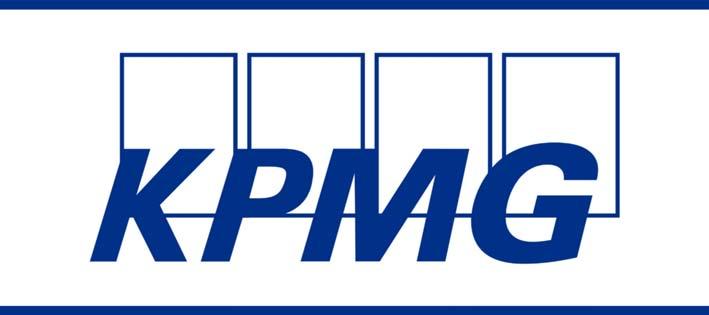
The Saudi version of the survey included 96 brands across nine different sectors and provided the respondents with the ability to evaluate those brands based on their personal customer experiences with them. The survey was based on the CEE methodology, developed by KPMG’s global CEE Centre of
Excellence, and is made up of six pillars; Empathy, Personalization, Expectations, Resolution, Integrity and Time & Effort. Those pillars represent the core of this research as they make up the fundamental components of an ideal customer experience.
In terms of overall CEE performance, the non-grocery retail sector emerged as a leader among other sectors in Saudi Arabia with a score of 8.08 in 2022 and beat its last year’s performance; Followed closely by the grocery retail sector with a score of 8.05. Such results indicate notable progress in those two sectors and point to the essential role they play in consumers’ lives.
Adib Kilzie, Head of Customer Experience, Cloud and Enterprise Solutions at KPMG, Saudi Arabia
52 Industry Insight
Moving down the chart, the financial services sector marked a noticeable decrease to a score of 7.94 compared to last year’s 8.07, indicating growing customer expectations that brands in the financial sector need to consider. Travel and hotels, restaurants and fast food, and entertainment and leisure followed with close scores of 7.92, 7.91 and 7.90, respectively.
Finally, telecoms, utilities and logistics sectors trailed the ranking with scores of 7.82, 7.70 and 7.66, respectively.
In the area of Net Promotor Score (NPS) index, non-grocery retail, grocery retail, and the financial services scored the highest among the other sectors. In contrast, logistics and entertainment & leisure obtained the lowest NPS scores.
“As we know, these sectors have been highly commoditized over the last few years, and ‘opportunities to delight’ have become significantly rarer,” commented Adib Kilzie, Head of Customer Experience, Cloud and Enterprise Solutions at KPMG in Saudi Arabia.
“Today’s customers are better informed, better connected and more demanding than ever before. In some cases, customer experience has overtaken price and product as the number one brand differentiator. Although many organizations are investing record amounts in customer-related initiatives, not all are seeing the desired ROI in the absence of a clear CX strategy.”
their services and orchestrate exceptional customer journeys.
“Although most businesses appreciate that need and its impact on their market share and profitability, they continue to face challenges in data collection and customer insight. The market has witnessed a rise in the use of Voice of Customer (VoC) solutions, surveys and questionnaires; however, many businesses have not been able to leverage the needed real-time data collection and decision capabilities,” Kilzie noted.
Companies are now acting purposefully, deciding what to take with them into the future and what to leave behind, he stated, adding that this points to a significant transition underpinned by new ways of working for most firms.
“The hierarchical silos of an industrial past are giving way to an agile culture for a digital future,” Kilzie concluded.
KPMG Survey:
Having the right customer insight through segmentation and persona development remains as a leading challenge among businesses; a challenge that is likely to hinder the business’ ability to personalize

Industry Insight 53
Global
issuance to exceed 320 million by 2027

54 Industry Insight
credit card
A new study from Juniper Research has found that the number of credit cards issued via digital card issuance platforms will exceed 321 million globally by 2027, from 120 million in 2023.
This growth of almost 170% reflects the use of new advanced digital capabilities, such as digital loyalty schemes and instant issuance, as card issuers aim to combat competition, including buy now pay later.
card strategy. It found that rising affluence in emerging markets will be a significant driver of credit card adoption. As such, digital card issuance platforms are critical to delivering credit offerings in these mobile walletdominated markets.
Digital card issuance platforms allow card issuers to create cards using an API-driven approach; enabling cards to be delivered instantly to digital wallets, with the option for a physical card; boosting flexibility significantly.

Digital issuance critical to addressing $9.7 trillion opportunity
The new report, Credit Cards Strategies: Innovation Analysis, Digital Transformation & Market Forecasts 2023-2027, found that credit cards will account for over $9.7 trillion in spend globally by 2027. This represents a significant opportunity for card issuers to drive revenue growth by choosing the optimal credit
Research co-author Nick Maynard explained further: “In emerging markets, the ability to instantly issue digital cards will be a key factor in users choosing credit cards over other payment methods. Card issuance platform vendors must ensure localisation to enable cards to be quickly pushed to the wallets popular in each market.”
Loyalty Rewards critical to credit card popularity
The research predicts that by 2027, the monetary value of rewards for users from credit card use will reach $103 billion globally, driving overall adoption. It recommends that card issuers focus on appbased loyalty to maximise the appeal of these rewards; partnering with well-connected digital loyalty programme providers to maximise their appeal. If issuers fail to do this, they will lose out to better-connected vendors in a highly competitive credit cards market.

55 Industry Insight
Favoritism in the Workplace Can Lead to Discrimination


56 Industry Insight
It is not uncommon for managers and supervisors to exhibit some level of favoritism toward certain employees. That is because the concept of favoritism stems from bias, which is a natural and unavoidable inclination to form preferences. Everyone has biases because human nature drives us to make judgments.


This innate reaction to make judgments combined
with a lifetime of conditioning from external influences creates biases that inform our opinions, and it is not necessarily a bad thing. However, high levels of prejudice can lead to the unfair treatment of an individual or group of people, and that result should be avoided at all costs. Therefore, critical reflection and careful consideration must be given to your behavior to ensure your inherent biases are not creating harmful prejudices.
Favoritism at Work
Managers, supervisors, and co-workers could all show signs of favoritism toward specific people or groups of people at work. Discrimination amongst employees is risky business for both the favored and unfavored individuals. Tension, conflict, entitlement, and resentment are only the beginning of the issues that may arise if favoritism is allowed to occur. Adverse effects of discrimination and prejudice at work spread into every aspect of a company, from hiring and retention to employee performance and workplace culture.
While it can be challenging to control behavior that stems from intrinsic opinions and judgments, there are ways to mitigate the effects of favoritism in the workplace. So, how can bias-fueled favoritism be ameliorated? For starters, recognition that such behaviors indicate poor or inadequate leadership is essential. Ensuring the management team prioritizes healthy and fair workplace practices is one step toward eliminating harmful bias.
Causes of Favoritism
In addition to the natural reaction to form opinions, there are many underlying causes of favoritism in the workplace. Nepotism occurs when preferential treatment is given to a relative, and it is one of the most common causes of favorable treatment from managers or supervisors. Physical appearance can also cause favoritism, as humans are often biased toward people they find attractive.
57 Industry Insight
Empathy, which is usually touted as a positive trait, can create bias, as well. It is easier to feel empathy for people who share similarities with you or for individuals who you feel a connection with. Thus, anyone who does not have cultural, experiential, or other similarities with managers may not elicit as much empathy. These feelings of connection often cultivate unconscious bias.
Unconscious bias is the culprit behind many instances of favoritism at work. Unconscious or implicit bias is simply a preference for one thing over another that is created unintentionally. It can be difficult to identify this type of bias because most people can hold prejudice for or against something while simultaneously, on a conscious level, believing that such opinions are wrong.

Signs of Workplace Bias
Identifying discrimination and bias at work is not always easy, but some signs are obvious. Behavior like unfair bonuses, pet names or nicknames, extra attention, and double standards usually get noticed fairly quickly by the employees who are being excluded or treated poorly. Employees who benefit from bias and favoritism may have fewer expectations placed upon them by managers or seem to be able to get away with anything.
Favoritism can start as early as the hiring process. Unfair hiring practices or policies can create a culture of discrimination that seeps into a company’s entire employment process. Nepotism or cronyism are common causes of unjust hiring and favoritism within the hiring process.

58 Industry Insight
If a company’s favoritism problem is severe enough, signs may appear as a general degradation of employee morale or worker productivity. Unfair treatment negatively impacts all employees, and such behavior often leads to divisive workplace culture. In short, favoritism is bad for business.
Allowing or ignoring the telltale signs of discrimination and harmful bias will eventually impact job performance, turnover, and the company’s public image. Further, certain forms of favoritism at work qualify as illegal discrimination and can result in legal action against a company.
Legal Action

Employees who are discriminated against due to a protected characteristic have the right to file a lawsuit against their employer. Protected classes include race, sex, sexuality, disability status, age, and any other classification that is legally prohibited. Excluding certain employees from the same benefits as other employees, skipping an employee for promotion, and reprimanding one employee for behavior but not others could all be grounds for legal action if based on discriminatory practices.

Summary
Cultivating a productive and fair work environment is important for employee well-being and company performance. People in leadership roles have a responsibility to keep personal prejudices from impacting their treatment of subordinates and setting a positive example for employees. Even seemingly minor instances of favoritism could cause workers to feel mistreated and lead to high turnover rates. What’s more, some forms of favoritism constitute illegal, discriminatory practices. When bias causes favoritism, and that favoritism turns into discrimination, businesses run the risk of facing serious legal consequences. Companies must take every possible precaution to prevent or address workplace bias.
Valencia George is a trained arbitrator and mediator. She has extensive experience mediating and arbitrating disputes involving labor, employment, and civil rights claims under federal and Florida laws. As an employment and business law mediator. Ms. George helps resolve business disputes productively and creatively. She can be reached at her firm, George & George ADR Group, at https://georgeandgeorgeadr.com/.
59 Industry Insight
What is A Margin of Safety in Investing?

60 Market
A margin of safety is an investment strategy that aims to reduce the potential for significant losses by buying securities at a discount to their intrinsic value. The concept is based on the idea that the market is often irrational, and that by purchasing assets at a discount, an investor can reduce the risk of permanent loss of capital.

Arguably the most famous book on why a margin of safety matters was written by legendary hedge fund investor Seth A. Klarman. With only 5,000 copies in circulation the book often sells for thousands of dollars and is widely sought out for its timeless wisdom. As the recent stock-market mania was peaking, Kailash Concepts, a leading firm in behavioral finance, fierce believer in the importance of capital preservation, and owner of the book, wrote a brief summary of Margin of Safety in an effort to warn speculators of the risks they were taking. Unfortunately,
nobody was listening.
uncertain, and even the most carefully researched investment can go wrong. By buying at a discount to intrinsic value, investors can reduce the potential for significant losses in the event that their analysis proves to be incorrect.
Another key benefit of using a margin of safety is that it can help to increase returns over the long-term. By buying securities at a discount, investors are able to purchase more shares for the same amount of capital. This can lead to a higher rate of return on investment over time, as the value of the underlying securities increases.
A margin of safety also helps to mitigate the effects of market volatility. Stock prices can fluctuate wildly in response to news and events, and these fluctuations can be difficult to predict. By buying at a discount, investors can reduce the potential for significant losses in the event of a market downturn.
money can be a major deterrent for many investors. By using a margin of safety, investors can reduce the potential for significant losses and focus on the long-term growth potential of their investments.
Finally, a margin of safety is important for investors because it can help to reduce the impact of human biases. Investors are often influenced by their emotions and past experiences, which can lead to poor investment decisions. By using a margin of safety, investors can reduce the potential for these biases to affect their investment decisions and focus on the intrinsic value of the securities they are considering.
Why Does Investing with a Margin of Safety Help Investors?
One of the most important reasons for investors to use a margin of safety is that it can help to protect against downside risk. The stock market is inherently
A Margin of Safety Can Mitigate the Behavioral Errors that Plague Investors
In addition, a margin of safety can help to reduce the psychological impact of investing. Investing can be a highly emotional process, and the fear of losing
In conclusion, a margin of safety is an important investment strategy that can help to protect against downside risk, increase returns over the long-term, mitigate the effects of market volatility, reduce the psychological impact of investing, and reduce the impact of human biases. By using a margin of safety, investors can reduce the potential for significant losses and focus on the long-term growth potential of their investments.
61 Market

62 Real Estate
Construction projects are fraught with danger. No matter how careful the contractor is, accidents can and do happen. When something goes wrong on a construction site, an insurance policy can help cover the cost of damages. Property owners must be aware of the risks involved in having their property under construction and have appropriate insurance to protect themselves and their investments.
There are many ways to secure the property under construction, but one way is by taking builders risk insurance. This type of insurance will help protect the property from potential damage or loss if a builder fails to meet planned deadlines or encounters unforeseen problems while working on the project.
What Is Builders’ Risk Insurance?

Builders’ risk insurance is required when starting a construction project. The policy will cover any losses from physical damage, such as fire, theft, and water damage. The coverage must be purchased before the start of the project to protect the contractor and its workers.
Who Gets This Type Of Insurance?
Owners and contractors of buildings are required to carry risk insurance. This type of insurance covers risks associated with property damage. The cost of this insurance can vary depending on the type of project being undertaken and the coverage offered.
What Is The Cost Of Insurance?
There are various factors to consider when calculating the cost of insurance. The type of construction, project term, scope of the project, and experience of the parties involved can all play a role in determining the cost.
For example, the insurance cost can vary significantly based on the type of construction. If a project is completed quickly and without any significant complications, the cost of risk insurance may be lower than if the project is more complex or takes longer to complete.
the price tag and how much coverage each policy provides.
What Are The Various Types Of Risk Insurance?
• Delayed startup: Delayed Start Up insurance is a type of coverage that can help protect businesses from losses caused by delays in completing construction work. This type of coverage can help businesses cover losses due to damage or physical loss due to delays in completing the construction work.
• Soft cost coverage: refers to leasing and marketing, legal and accounting and other carrying costs, finance, additional interest, and depreciation. Soft costs are not fundamental to producing or selling a product or service. Soft costs are not related to the physical construction of the project.
Projects completed on short notice or with minimal planning may also be more expensive to insure because insurers have less time to create a comprehensive policy.
When calculating the risk insurance cost, it is essential to consider
• DE5 Design Coverage: It provides coverage for all damage due to a defective condition of construction. It, however, excludes the additional costs of improvement. DE5 is one of the most commonly used insurance policies when purchasing or renovating a home. This policy can help protect you financially if there is a problem with your home construction.
63 Real Estate


64 Real Estate
From Where To Get This Insurance?
Many insurance brokers in the market can help you in getting insurance coverage. You will find most of them through online platforms. However, you must consider a few things before hiring them, such as:
• First and foremost, make sure that the broker is qualified and licensed.
• Additionally, be sure to ask about the broker’s experience and what type of coverage they can offer.
• Furthermore, it’s essential to be realistic about expectations – a good insurance broker can
help you save money on your premiums. They can help point you in the appropriate direction if you’re looking for specific types of coverage.
• Finally, always read the fine print – brokers can charge for their services, so ensure everything is spelled out in advance.
Wrap Up
Hiring an insurance broker can save you time and money when constructing your dream home. Working with an experienced broker ensures you are fully protected from potential risks. So if you are in the market for construction insurance, consider talking to a professional!

65 Real Estate
Buying Foreign Land and Property: Is It A Good Investment?

66
Real Estate

67 Real Estate
Investing in real estate is popular because of its potential benefits. For one, you can earn a decent income with little involvement after buying a property. Because of these benefits, buying foreign land and property should be one of your real estate investment ventures.
It might seem a bit overwhelming or scary since the property is abroad. But when done right, you could enjoy the following perks:
have a place to go home, so rushing to events wouldn’t be a chore. All you need is to maintain a livable property throughout the year. You can either hire a property manager or visit the country regularly to maintain your foreign home.
2. Earn Higher Returns
understanding your prospective countries’ real estate markets.
3. Diversify Your Portfolio
Whether it’s the peak or lean season, you can always have a home to stay in when vacationing abroad. You can also travel to your home away from home any time of the year since accommodation isn’t an issue.
For instance, buying real estate in Ireland would be a good investment if you love spending your time off in the British Isles or Europe. You can buy 12-25k an acre for land that can turn into a residential or long-term vacation rental.
No matter how long you stay in a foreign country to take everything in, you won’t spend as much on accommodations. You always
Another reason for buying foreign land and property is the higher returns. A good example is the property in the scenario above. You can rent it out when you’re not visiting the country. Alternatively, you can wait for the property’s value to increase before selling it. By doing this, you can get more from it after using it as a vacation home for years.
To earn higher returns, buying in most developed countries might not be the best idea. Although you won’t lose your investment, it may take time to gain from it since the real estate market can be somewhat cyclical.
For instance, you may fare better if you run a rental in a developing country than in most developed countries. The value appreciation may keep increasing yearly while you also earn from your rentals. You’ll help your position if you do your due diligence by
Investing in properties from a foreign land is one way to diversify your real estate investment portfolio. Buying foreign property is excellent since you’re not putting all your assets in one market. You can protect some of your assets when one market fluctuates because you’ve invested them overseas.

For instance, the market in the United States may need to be faring better. This may be due to interest rates, geopolitical circumstances, and economic activity. If this happens, the value of your properties may decrease.
You can’t control the market’s uncertainties, but you can protect your wealth by diversifying your portfolio. Properties overseas may not fluctuate like your home country’s market. Thus, you only lose some of your assets in one market.
4. Have Foreign Residency
Besides having a vacation house overseas, you also have the opportunity to have a foreign residency. Most countries grant
68 Real Estate
1. Establish International Vacation Property
foreign residences when you buy real estate in them.
Having a foreign residency allows you to gain some of these benefits:
• Working and living in another country
• Travel from one country to another quickly
• Access to better healthcare and education
• Stability and security for countries with economic and political instability
• Oppor tunities for business and investment growth

You can also explore new entrepreneurial opportunities since not all countries allow foreigners to own or run businesses. But once you become a citizen of that country, you can access their market, from stocks to other wealth-building opportunities. It’ll also be easier for you to attract local customers, investors, and partners.
overseas as foreign financial assets. So if you own a rental or residential property in another country, you don’t have to report it to the IRS.
This is because the IRS can’t force the sale of second homes in other countries. They can’t even seize foreign real estate even if they want to. Moreover, you can also benefit from a tax return. You can deduct the cost of your trips to the other country where your real estate property is on your US tax return. Your taxable income can also pay the interest on your foreign property’s mortgage.
6. Have Safety Benefits
Most importantly, you can use your foreign property to safeguard your assets from geopolitical issues, natural disasters, and the like. You need to buy in safe or peaceful countries, making it safer to invest in real estate than when you do domestically.
disaster. And even if your properties in your home country get destroyed, your properties abroad won’t be affected.
Insuring your property can solve the problem of investment losses from disasters. At the same time, owning properties abroad can be a better option. That’s because you can save time and effort in building or renovating your damaged property. Most importantly, your cash flow from a rental property abroad will continue, unlike when you have to rebuild or refurbish your property after a disaster.
Conclusion
5. Enjoy Privacy And Tax Advantages
If you’re a US citizen, you must report your income and assets to the IRS annually. The IRS doesn’t classify real estate properties
For instance, buying foreign and land property may be an excellent option if you live in a country prone to disasters, man-made or natural. Because when you buy properties domestically, you have higher risks of losing your investment in the event of a natural
The benefits mentioned in this blog should answer whether owning foreign land and property is a good investment. Besides having a foreign residency and property, you can open more doors for growing your wealth while protecting your assets from instability in your home country. As such, you may want to consider this investment idea.

69 Real Estate
Self-care Technologies Transforming Global Wellness

Self-care Approaches in a New Normal
The World Health Organization (WHO) estimates that about 4.3 billion people have insufficient access to basic healthcare facilities and services. By 2030, it is estimated that the world will be short 18 million healthcare workers to meet the Universal Health Coverage (UHC) goals. Furthermore, ongoing humanitarian crises, climate change, pandemics such as COVID-19, and political conflicts have adversely impacted the global reach of healthcare products and services, leading to poor health conditions in affected regions. Hence, self-care practices and interventions by individuals and communities have the potential to reduce the pressure on global healthcare systems by encouraging people to take active ownership of their health.
Self-care is a proactive and customized practice to establish and maintain an individual’s holistic health and wellness, as well as a key enabler to prevent and manage diseases. Self-care encompasses physical, mental, emotional, social, and environmental approaches to enhance an individual’s well-being. Self-care practices and interventions can empower people and communities with the agency to maintain and enhance their health and prevent and manage illnesses. Self-care can often be complemented

with products and services from professional healthcare providers, such as physicians, nurses, and healthcare centers, as needed, to improve the well-being of the end user. Self-care will not replace global healthcare systems or practices but will help enhance existing systems to achieve UHC.
Self-care practices and interventions are built on the following pillars:
1. Physical Self-care:
Physical self-care practices and interventions comprise technologies, products, and services that enhance physical well-being. These could include dietary and nutritional enhancements that improve immune health. Gut microbiome-based technologies, such as the use of probiotics in supplements, food and beverages, can enhance overall immunity and decrease the propensity of allergies and infections. A recent global survey conducted by Chr. Hansen, Denmark, revealed that 75% of the global population was aware of probiotics and about 50% of consumers were familiar with gut microbiome. High consumer awareness is likely to increase the adoption of self-care products, especially the consumption of microbiome-based supplements or dietary products to enhance immunity. The renewed
70 Technology
focus on immune health will also likely fuel new innovations in this segment. Not surprisingly, the patent publication landscape for hand sanitizers witnessed a spike during 2020-2021 at the peak of the COVID-19 pandemic, reflecting increased innovator activity in this space. Apart from heightened consumer awareness and the rising innovation landscape for physical self-care technologies, personalized product and services platforms will also define the future of the global self-care sector. For instance, BlueprintFit offers biomarker-testing strategies to enable personalized nutrition solutions. Holistic physical self-care will typically comprise multiple elements from the diet, self-monitoring devices and trackers, OTC medications, skin, hair & oral care, and indoor hygiene and wellness segments.
2. Mental Self-care:
The COVID-19 pandemic had an adverse impact on mental wellness. The WHO reported that depression and anxiety increased by over 25% in 2020. Despite being years into the pandemic, about 44% of countries continue to witness disruptions in mental healthcare services. Fortunately, the pandemic also accelerated the development and launch of digital mental self-care platforms. While there are several mental wellness apps that are accessible to global users today, only a few have scientific and/or research backing. For instance, The Headspace app is one of the few apps backed by multiple research publications that state the app can alleviate stress, blood pressure, anxiety, and depression symptoms. Additionally, learning and development activities such as learning a new skill, solving puzzles, gaming, reading/listening, practicing meditation, and mindfulness also promote mental well-being. Such self-care digital apps combined with professional mental health support (across in-person or remote settings) have the potential to transform mental wellness in the future.
3. Emotional Self-care:
While mental health enables you to think logically, emotional well-being provides the strength to manage emotional responses to situations and/or people. Several factors regulate emotional wellness, including age, gender, self-perception, socioeconomic status, work, education, and cultural environment. Although emotional well-being is critically important for holistic wellness in individuals, this self-care segment is underexplored from technological, application and interventional perspectives. Self-care practices, such as journaling, exploring additional interests in fine arts, or creative blogging have a positive impact on emotional health. Thus, it is important to encourage active emotional self-care across professional and personal settings.
4 Social Self-care:
The COVID-19 pandemic has had an adverse impact on social health due to self-isolation norms that have still not been fully relaxed across the world. Professional and personal socializing has been severely restricted globally, which adversely impacts overall well-being. However, technology helped bridge the gaps in social networking with the help of online meeting apps. Furthermore, several employers have encouraged people to practice self-care, enabling better work-life balance by providing remote working, mandatory time off, and online counseling access for improved stress management.
5. Environmental Care:
Due to pandemic-driven global lockdowns and worldwide self-isolation protocols, there has been a renewed focus on indoor air environments and hygiene practices. Microbiome-based technologies have also been explored to improve heating, ventilation, and air conditioning indoors. Technologies

71 Technology
that can re-create a healthy outdoor environment within closed spaces are likely to be adopted more frequently. For instance, humidifiers infused with a steady stream of healthy microbiota help decrease allergies and pathogenic infections. Such technologies will have a growing demand in the coming years. Thus, indoor environmental care will also contribute to the overall well-being of individuals.
Physical Self-care Approaches: Connected and Customized Wellness Platforms
Physical self-care is the most well-defined and structured segment, backed by decades of R&D. Accelerated digitization helped integrate different facets of physical self-care practices, especially during the pandemic, and enabled people to take stronger control over their personal wellness. Here’s a deeper look into physical self-care aspects:

1. Diet, Nutrition & Immunity:
Several factors can impact immune health, such as nutrition, gut biome, infections, genetics, illness medication, time of day, smoking, alcohol consumption, exercise, stress, age, and body weight. However, there is rising adoption of gut microbiome and dietary technologies that help enhance immunity. Nestle, DuPont, and DSM are some of the key innovators that leverage prebiotics, probiotics, synbiotics, and postbiotic platforms to develop microbiome-based formulations for several F&B, DTC, and therapeutic applications. Interestingly, SMART nutrition technologies have been able to customize diet and nutrition to suit a person’s needs. For instance, NutriBullet Balance allows a blender to be connected to a smart device such as a phone or tablet using apps and provides real-time updates on nutrition data, which enables improved diet management.
2. Self-care Devices:
Advances in self-monitoring platforms enabled real-time tracking of physical and physiological parameters in a user-friendly manner. There are several devices and apps that help individual monitoring of sleep, exercise, and metabolic and cardiovascular indicators. People can integrate different aspects of self-care devices to derive actionable insights for improving daily well-being. For instance, Samsung launched Galaxy Watch5, which offers advanced sleep coaching and bioactive sensors to track wellness goals in real time. Qualcomm offers the Snapdragon Wear™ platforms, which include smart apparel, smart shoes, and other products to track sleep and exercise activities.
3. OTC Medications:
While the technologies and innovation in the OTC sector have largely remained the same, their use has increased during the pandemic. The use of hand sanitizers also increased exponentially during the pandemic. Novel bottle designs, such as the use of touch-free sensors, were in high demand and adopted worldwide.
4. Skin, Hair & Oral Care:
There is a rising focus on holistic skin, hair, and oral care, beyond the traditional cosmetic applications. Ingredient formulators are increasingly conscious about using clean, sustainable, and preferably naturally sourced formulations to enhance skin, hair, and oral health. For instance, there is growing use of topical Bakuchiol compositions to manage skin health.
72 Technology
The Final Word
While it is evident that self-care will be a critical enabler for public health equity, there is a great need to promote health literacy. Research has shown that low health literacy rates have been associated with higher healthcare costs and suboptimal health outlooks. Public and private healthcare consortia and companies should focus on methods to improve global awareness of self-care practices. Consumer and healthcare service providers should actively endorse the use of such technologies and apps to empower and guide people toward self-health management and disease prevention practices.
Technologies and apps that aid medication adherence, physical monitoring, physiological metric tracking and diet control are the leading technologies in the self-care space. Mental wellness technologies and applications will also gain traction in the next five years. Additionally, there is a growing likelihood of convergence and meaningful crosstalk across diverse self-care technologies that will enable customized and comprehensive wellness insights for people globally. For instance, mobile and home devices that track health and medication can
communicate with healthcare providers for medical recommendations that will improve and maintain an individual’s health and immunity, helping a paradigm shift toward preventive healthcare strategies.
Self-care must form a core offering within public and private healthcare policies globally. Consumer wellness companies should redesign their marketing strategies to promote holistic self-care-based wellness products and services and ensure the claims are backed by scientific and clinical research to enable greater consumer trust and adoption. Country-level self-care policies should be customized based on local research that provides a deep understanding of the relationship between an individual and self-care practices in their community settings. As self-care is a rapidly evolving segment, it is imperative that novel technologies, products, and services are developed using customized, evidence-based research. Additionally, the focus on the long-term vision and individual wellness outlook will help develop targeted strategies for robust self-care technologies. Thus, physical, mental, emotional, social, and environmental self-care practices can be a potential game-changer in transforming the world’s health outlook.

73 Technology Self-care Diet, Nutrition & Immunity Wellness Counseling Personal Connects Professional Connects Journaling Fine Arts Creative Writing Learning & Development Self-care Devices OTC Medication Skin, Hair & Ora Care Mental Social Environmental Physical Emotional
KPMG: Saudi firms faster than global peers in adopting cutting-edge tech
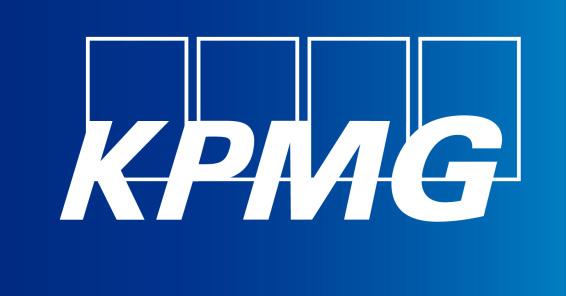
74 Technology
KPMG, a leading provider of audit, tax and advisory services in Saudi Arabia, has published “Tech Survey Saudi Arabia 2022”, which uncovers the technology strategies businesses are using to help outsmart their competitors in a time of unprecedented global change.
The report surveyed more than 2,200 executives around the world – including 51 in Saudi Arabia –and conducted a series of in-depth discussions with industry experts.
The Tech Survey was launched during LEAP 2023, the four-day annual tech convention held in Riyadh, with more than 100,000 tech innovators and leading experts from around the world.
Public and private sector organizations in Saudi Arabia have been investing heavily in digital transformation. Organizations in the Kingdom have set their sights high, inspired by Vision 2030 and digital transformation initiatives set out by the government.
Saudi companies have quickly embraced artificial intelligence, data transformation and emerging technologies to harness technology to outperform their global counterparts.
“Our latest global tech report finds a resilient, forward-looking attitude among technology professionals in the Kingdom and their peers globally. Moreover, Saudi organizations also demonstrate that they are not risk adverse in adopting tech at the cutting edge, in some cases moving farther and faster than
their peers,” commented Robert Ptaszynski, Head of Digital & Innovation at KPMG in Saudi Arabia.
Almost 66 percent of Saudi-based respondents believe their organizations are either extremely or very effective at using tech to advance their business strategies.This marks the highest confidence level in this research series, supported by a high return on investment and indicating that effective digital transformation is less of a differentiator than in previous years.
Eighteen percent of the respondents have extremely effective transformation programs that have generated at least an 11 percent uplift in profit or company performance.
Eighty percent of organizations in the Kingdom are at an advanced stage of their digital transformation strategies, with the leadership support and funding required to drive their program forward.
Although 41 percent admit that progress is slower than expected, in general, digital transformation programs have put Saudi organizations in the Kingdom in an advantageous position to embrace new technologies.
Moreover, the expected timeframe for most Saudi organizations to invest in quantum computing is two years, with 70% of businesses suggesting they have advanced in their adoption of data and analytics systems.
75 Technology

76 Technology
Almost 53%of executives in Saudi Arabia find security and compliance requirements to be the top challenge their organization faces in their cloud journey. In comparison, 63%of organizations plan to increase investment in application security, which is 20% more than the global average.
Cybersecurity teams are under pressure to keep up with evolving threats, with cultural obstacles and limited funding getting in the way of security efforts. Nonetheless, most Saudi organizations are confident of their ability to prevent or mitigate security risks.
The digitalization of customer channels and the adoption of hybrid working are the two biggest cybersecurity challenges faced by Saudi organizations, with almost half of the respondents (47 percent) citing the need to improve customer experience as the top driver of their cybersecurity spending.
“To help ensure that tech innovations enhance customer trust and loyalty, rather than put it at risk, security should be incorporated into planning from the beginning, rather than added later as an afterthought,” stated Ptaszynski.
Despite the challenges, Saudi respondents are confident in their cyber capabilities. More than 50 percent are either very or extremely confident in combatting various cyber threats, including from organized crime groups, insiders and compromised
supply chains. In several threat categories, this confidence level increased to over 60 percent.

As part of its efforts to map out the new definition of digital leadership, KPMG presents seven traits in today’s most digitally advanced organizations: tear down siloes so the voice of the employee can be heard between departments, Be part of the solution to the talent crisis, Build airtight alignment between cloud stakeholders,Ensure cyber specialists have early involvement in tech selection and staff education, Allow the voice of the customer to guide emerging-technology strategies, Be prepared to switch platform providers to enhance customer experiences and Experiment wisely.
“These traits work together to optimize the output of IT, ensuring digital-transformation efforts are sustainable and continue to add value and contribute to loyalty-winning customer experiences in the long term,” said Ptaszynski.
“Digital transformation triumphs are empowering today’s businesses to face the uncertainty ahead with a confident spirit. The returns and performance improvements earned to date have branded customer-centric technology strategies as lifesaving tools in any business’ survival kit,” he concluded.
77 Technology


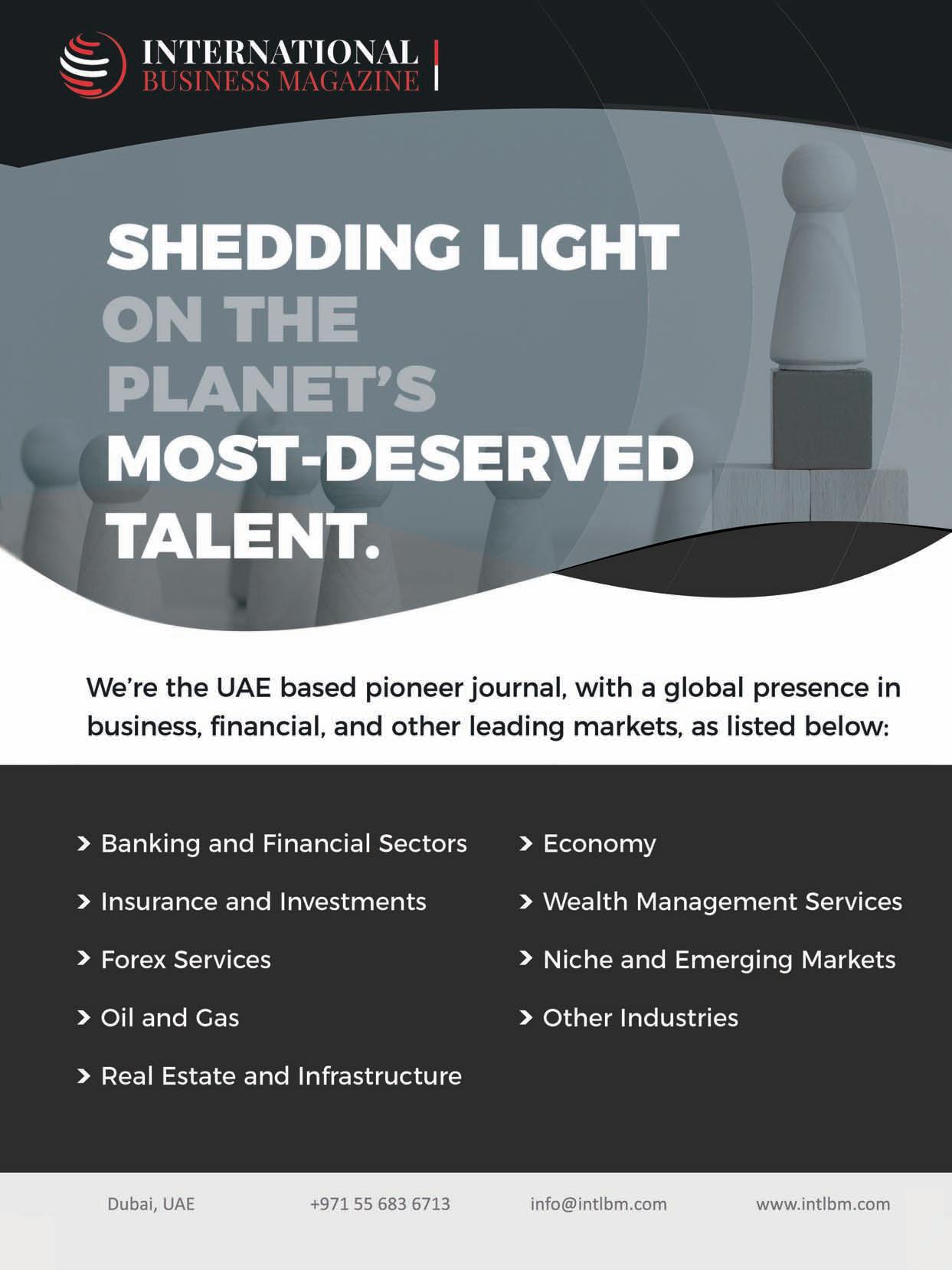











































 Sakif Shamim
MD, Labaid Cancer Hospital and Super Speciality Center
Sakif Shamim
MD, Labaid Cancer Hospital and Super Speciality Center

























































































